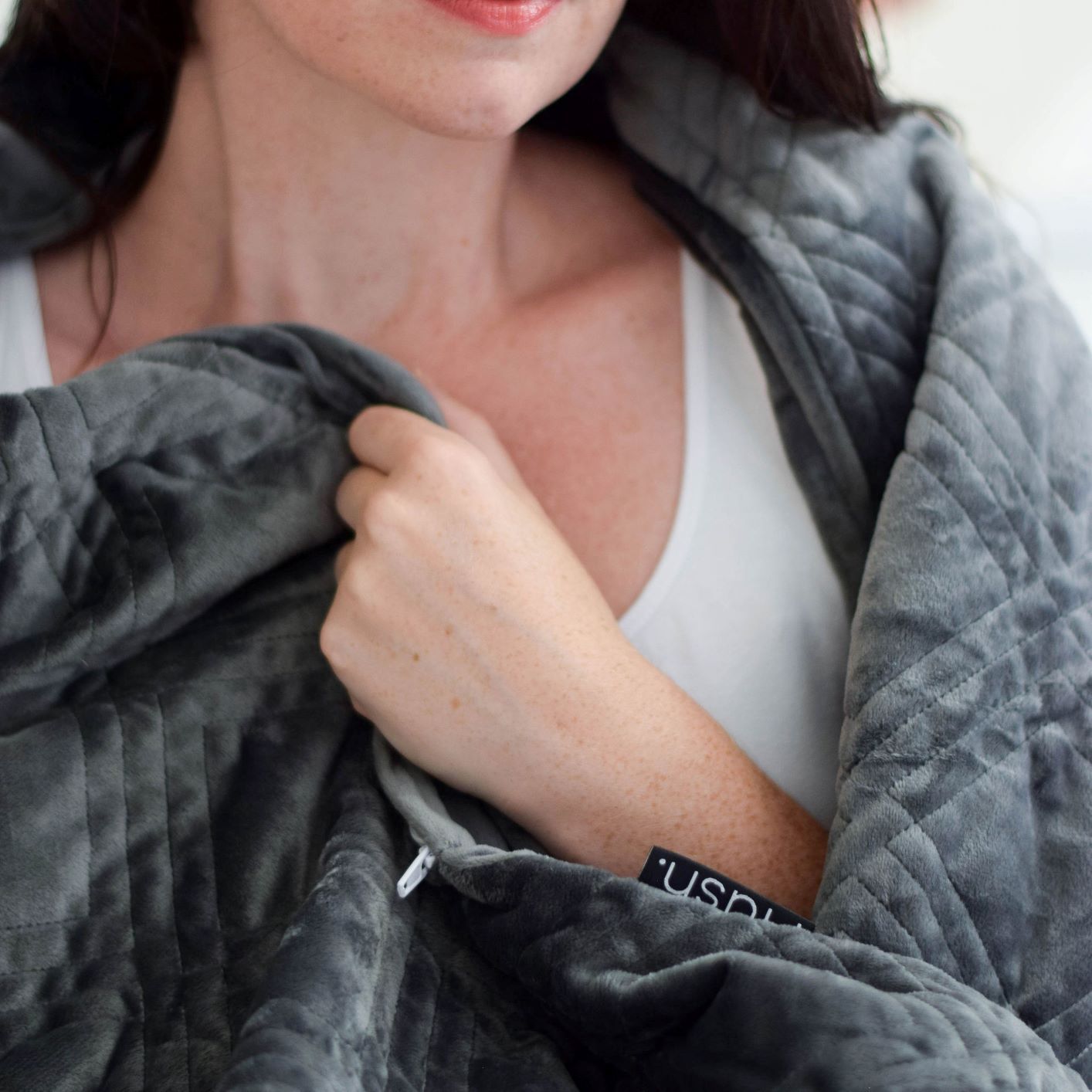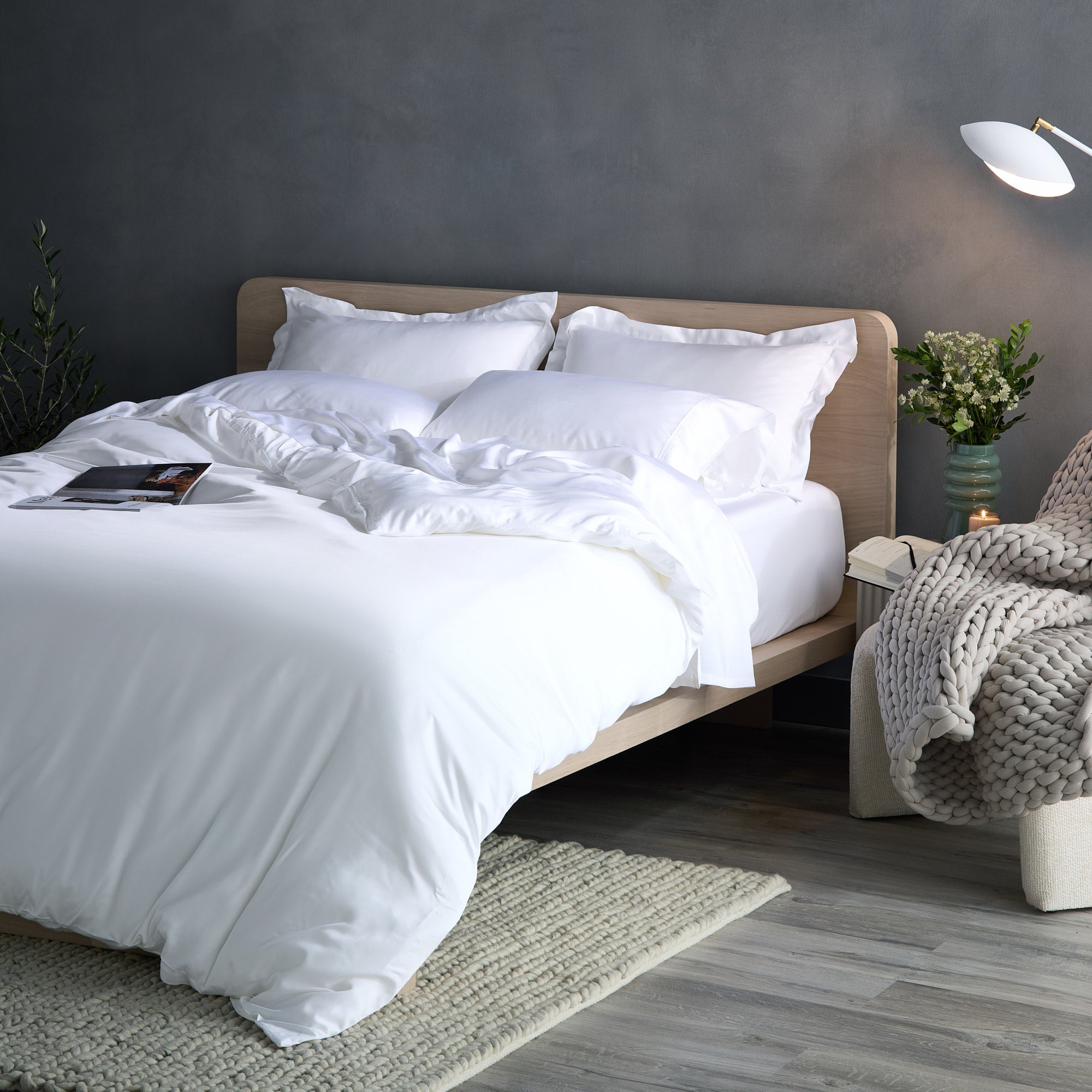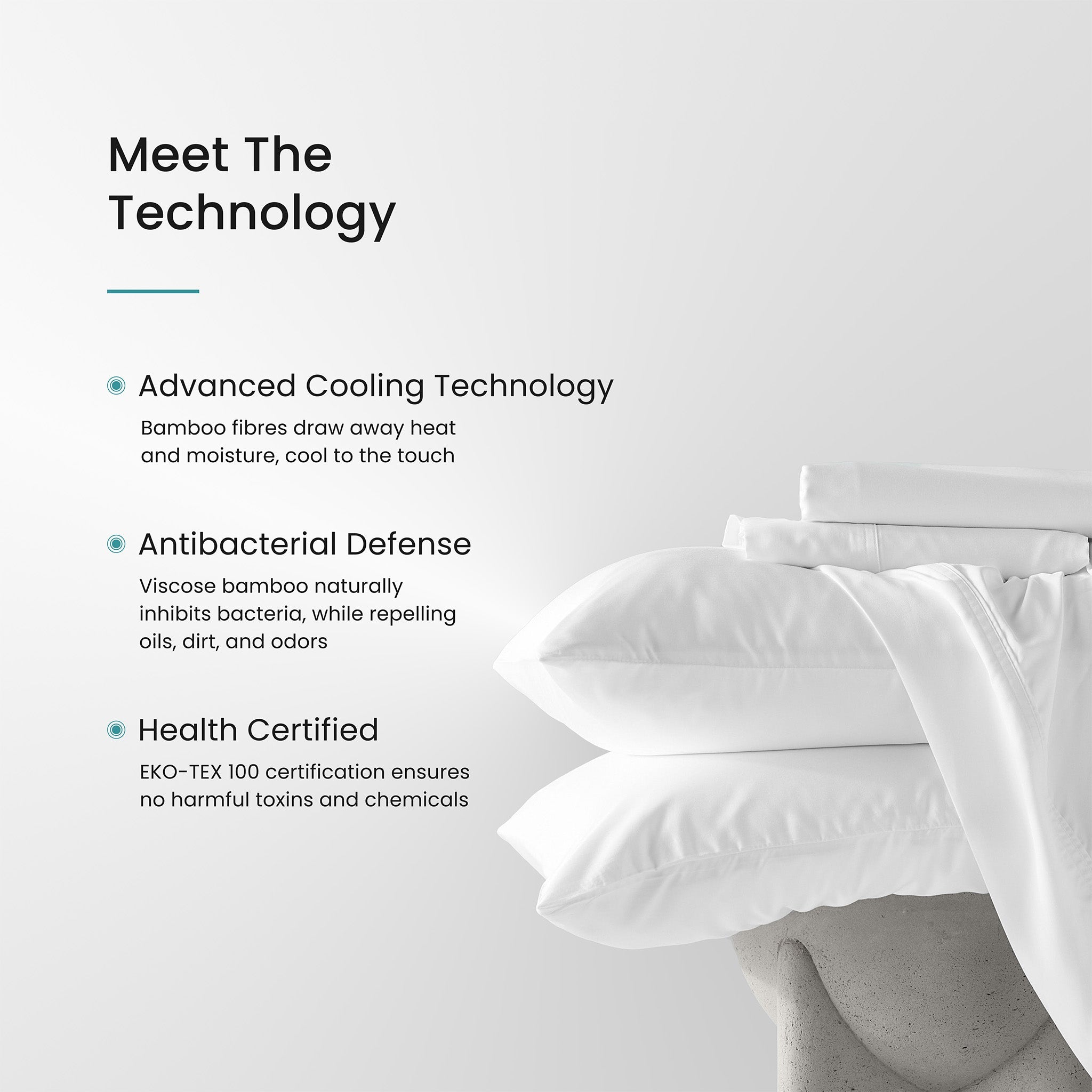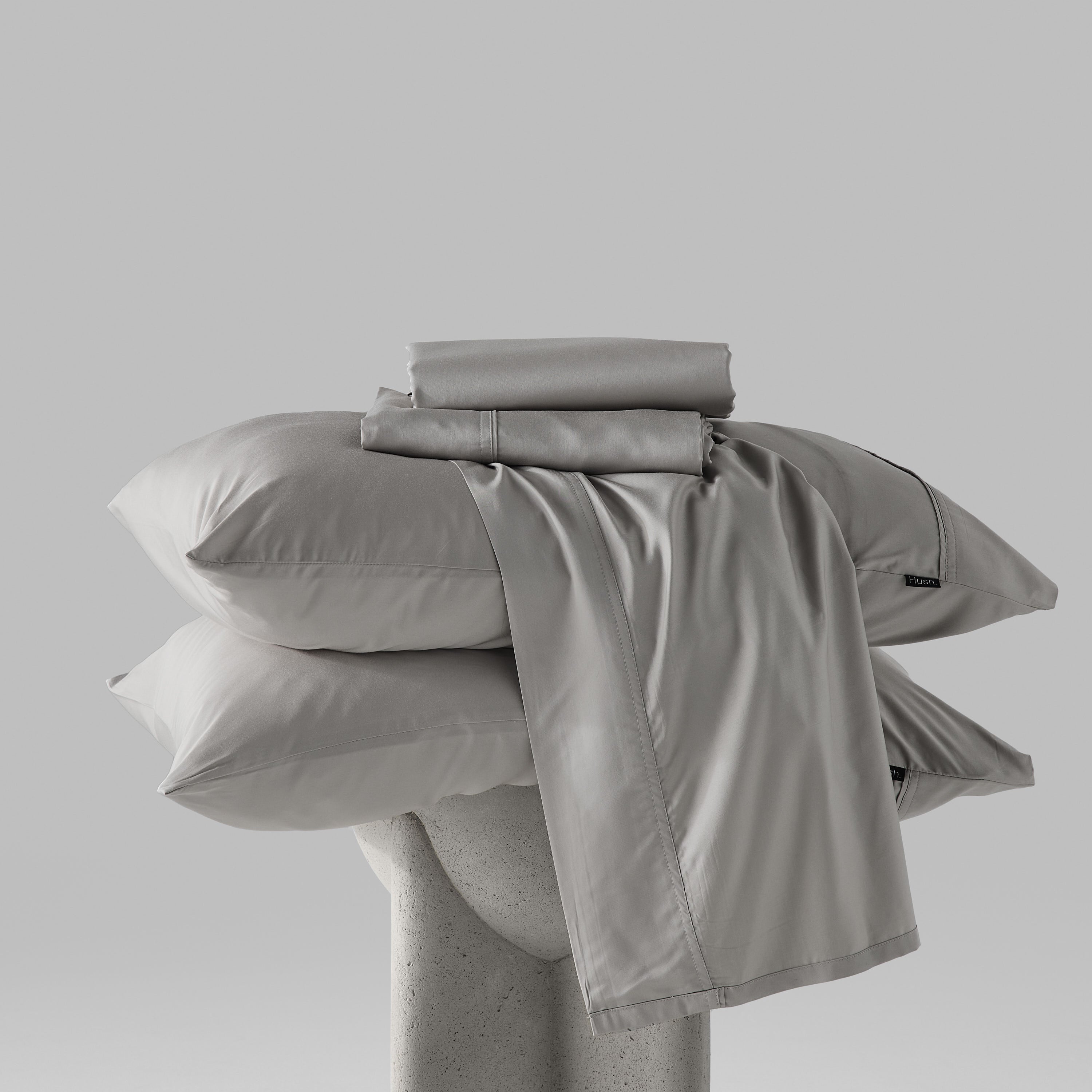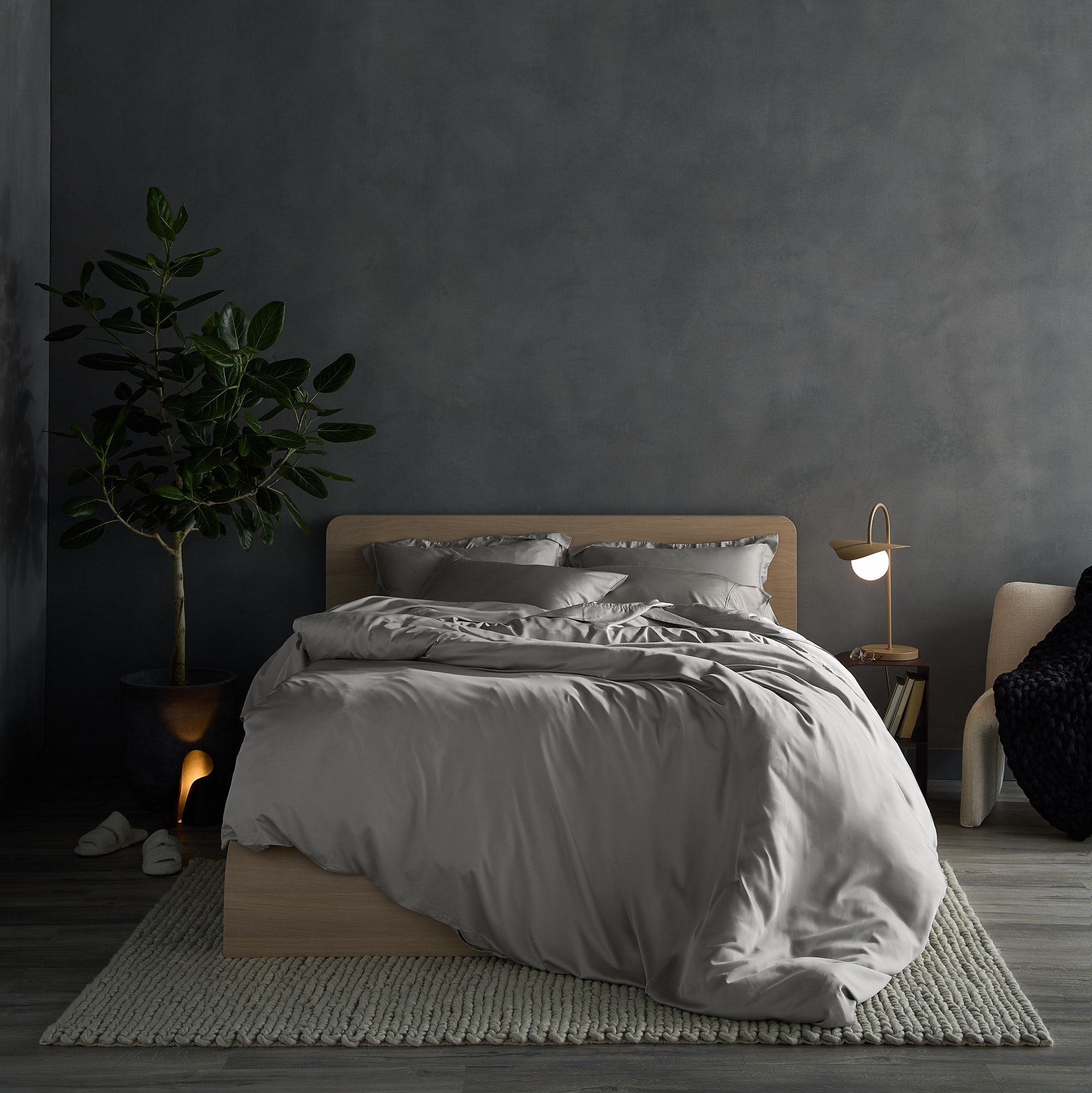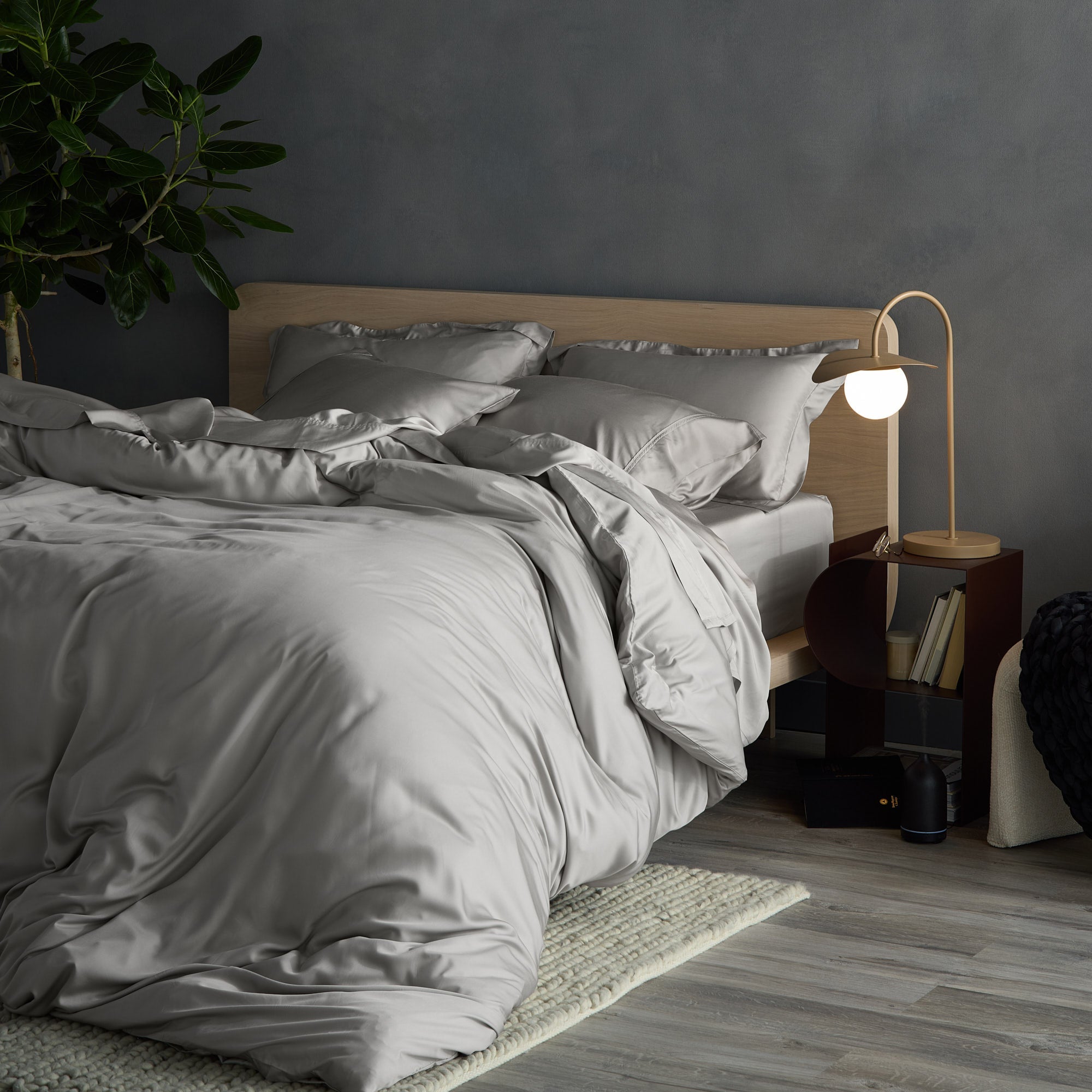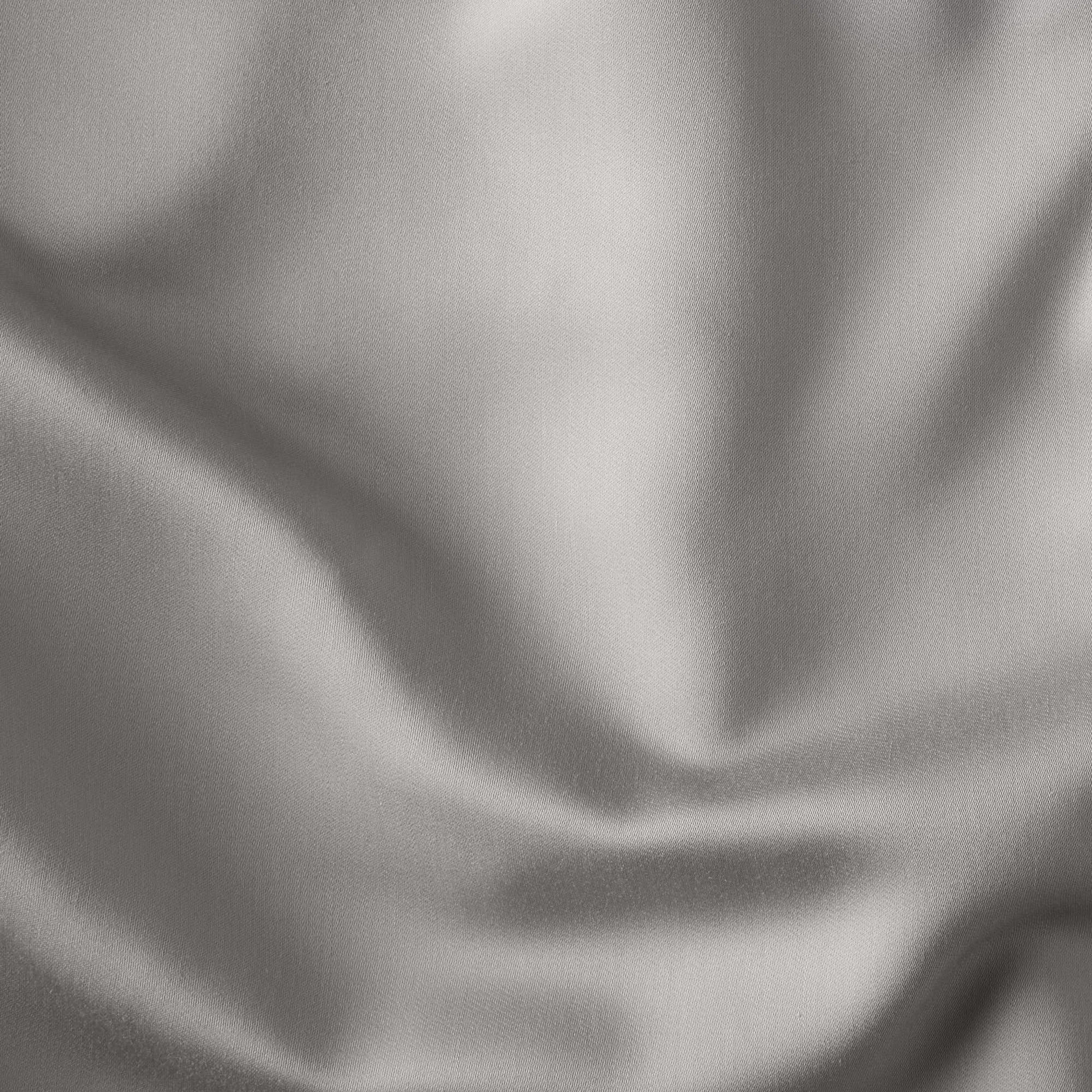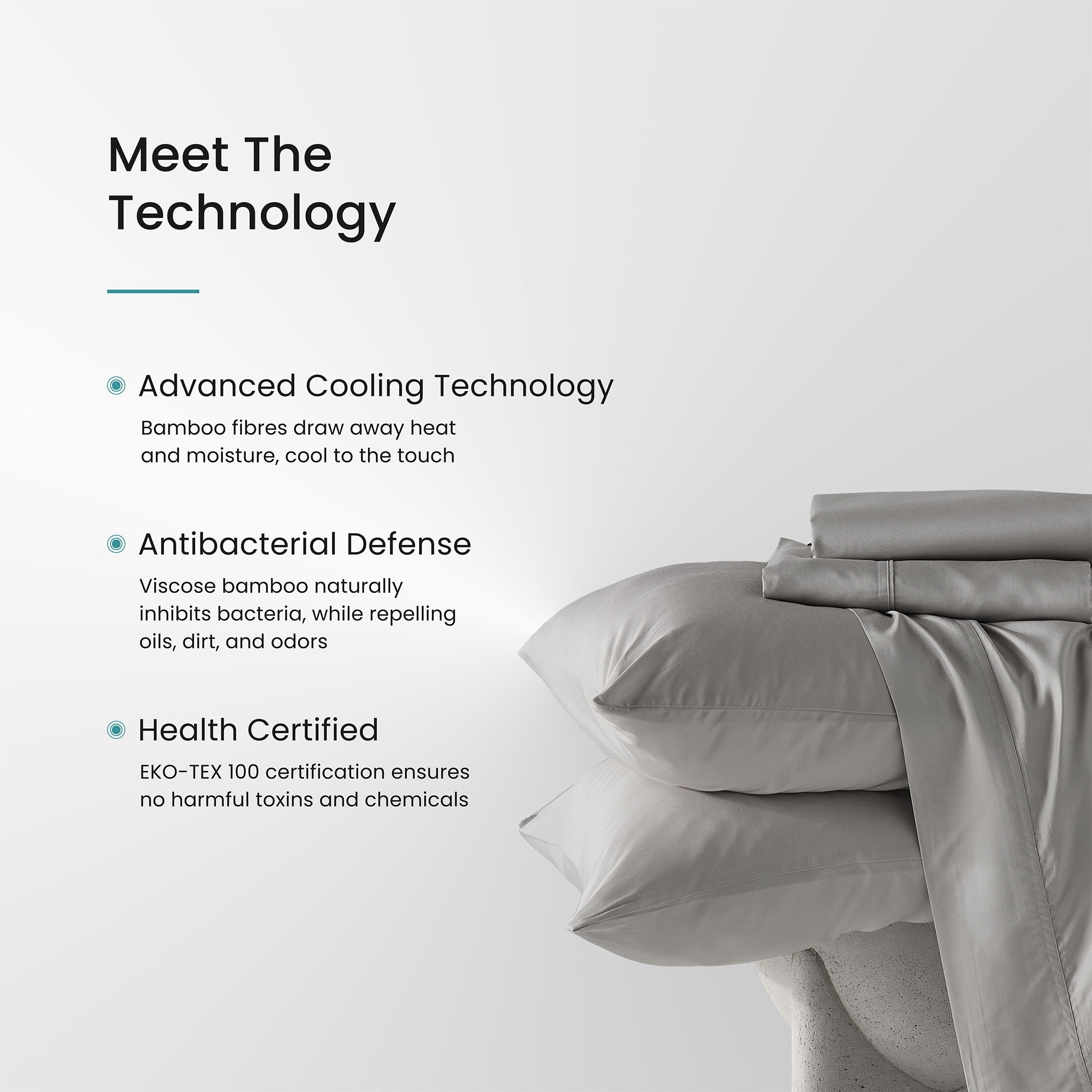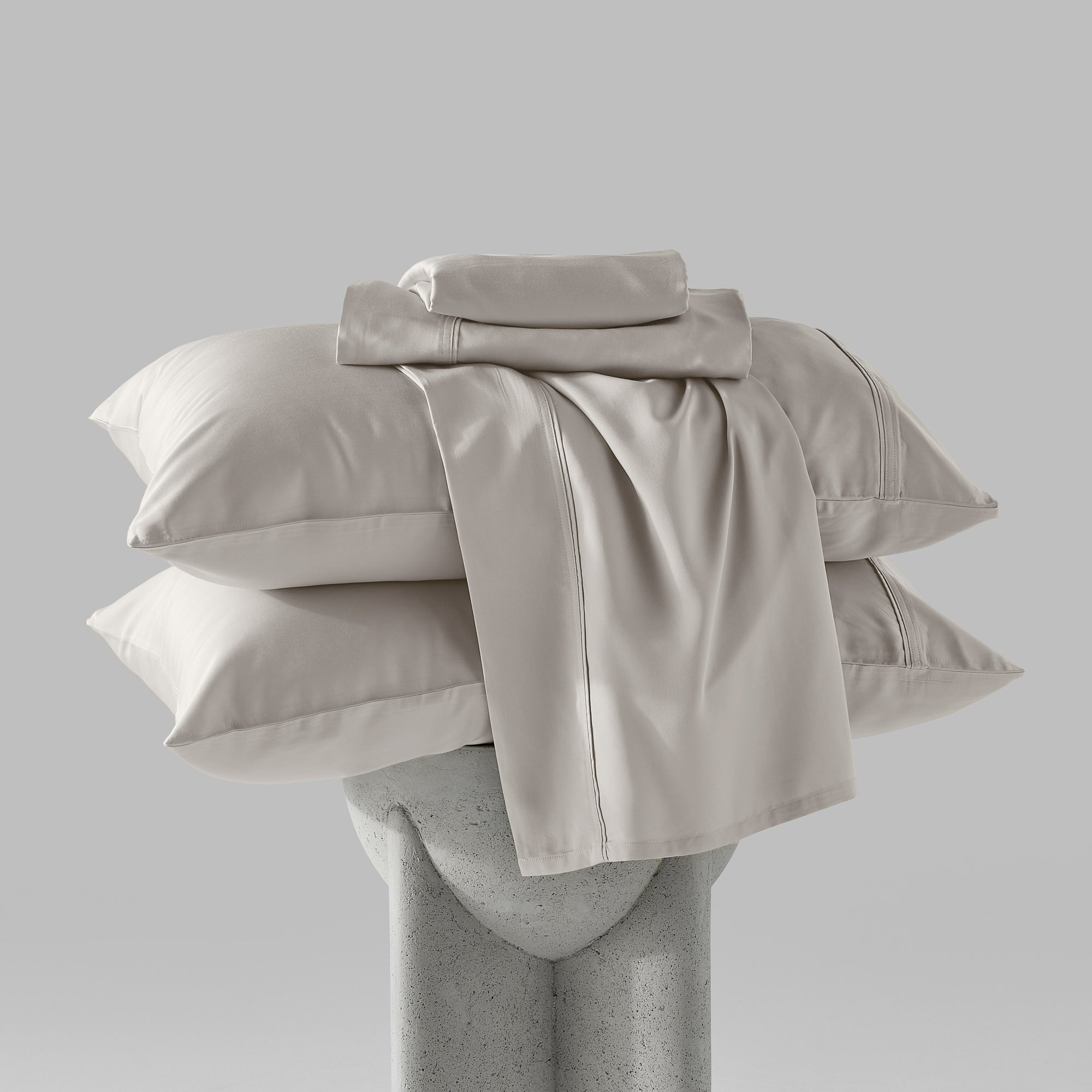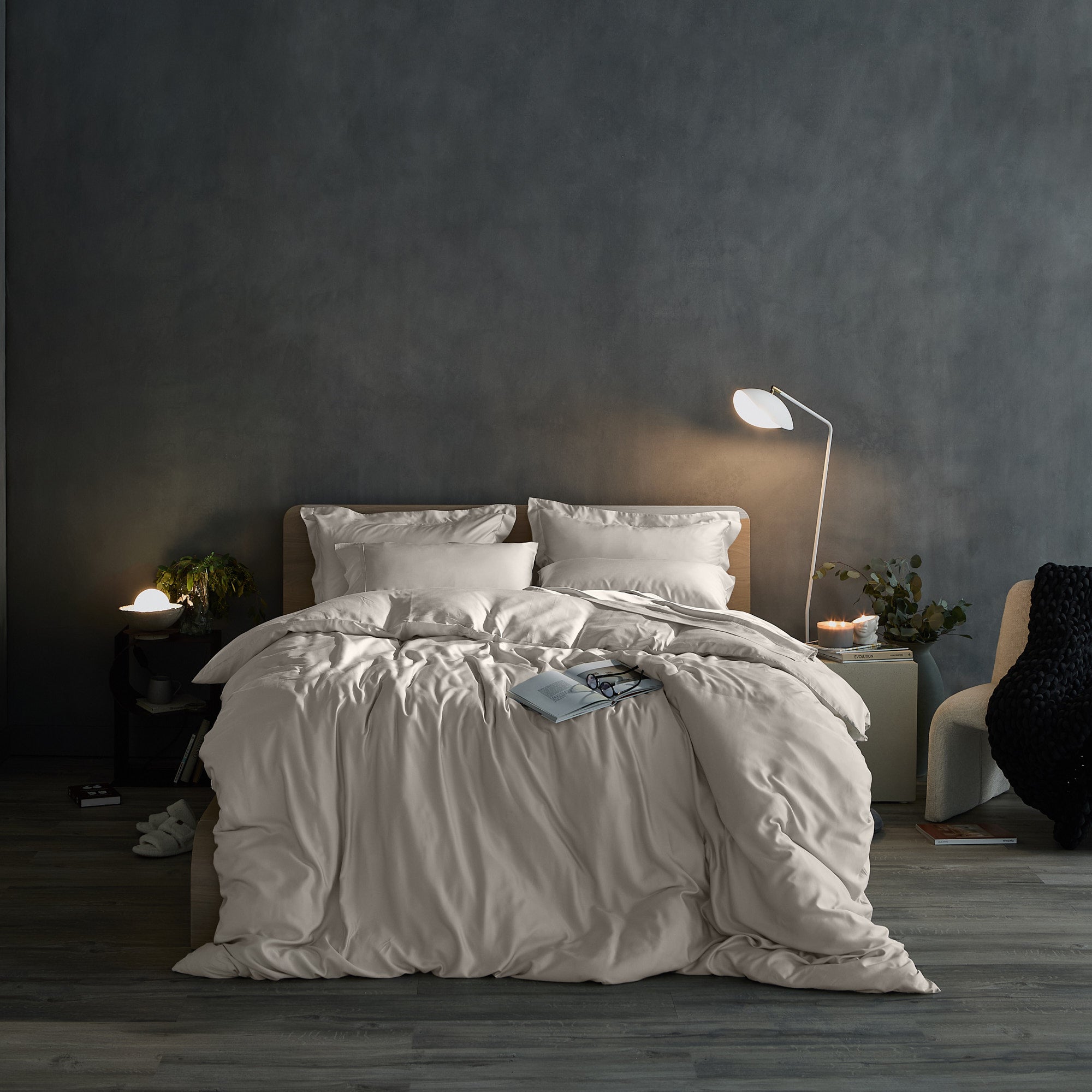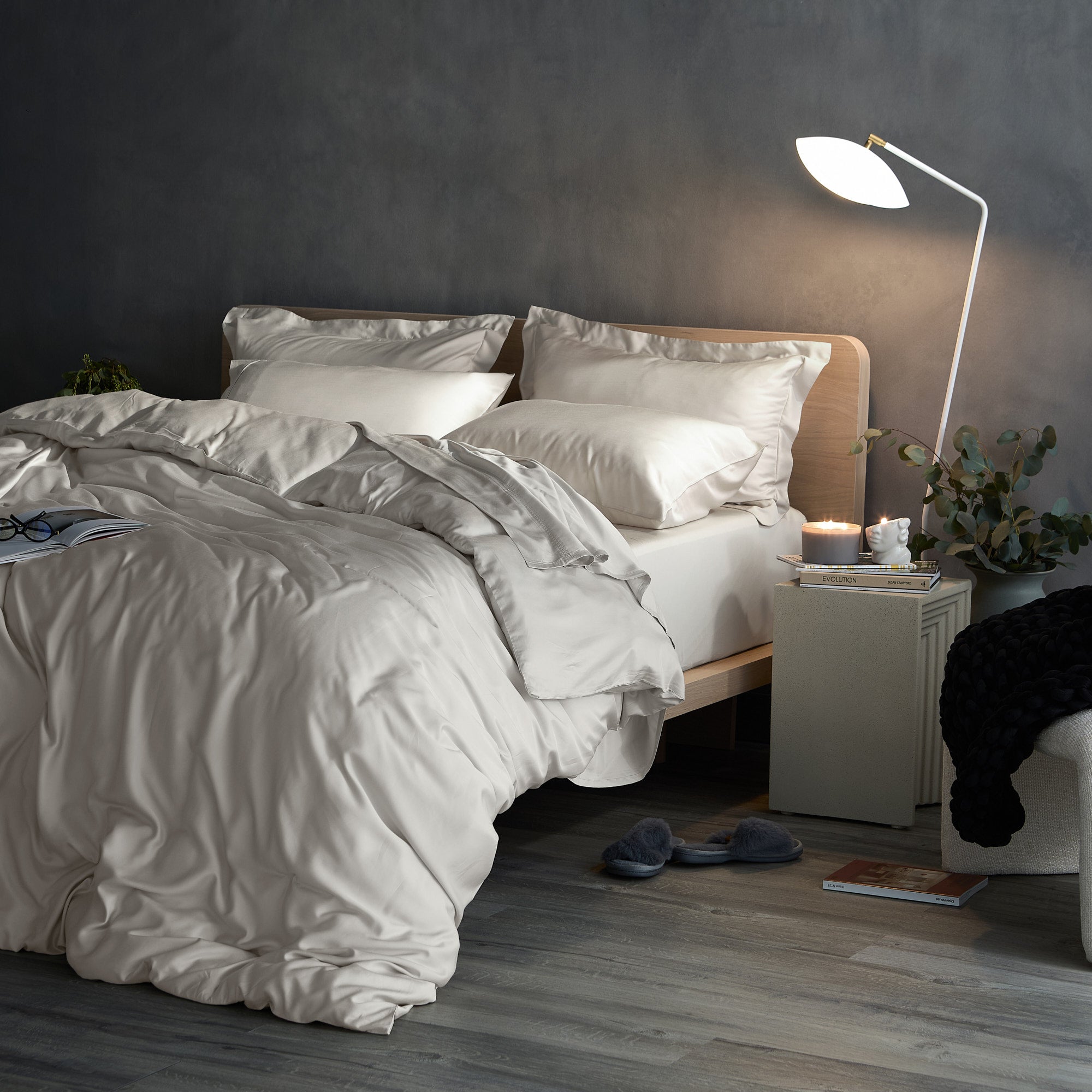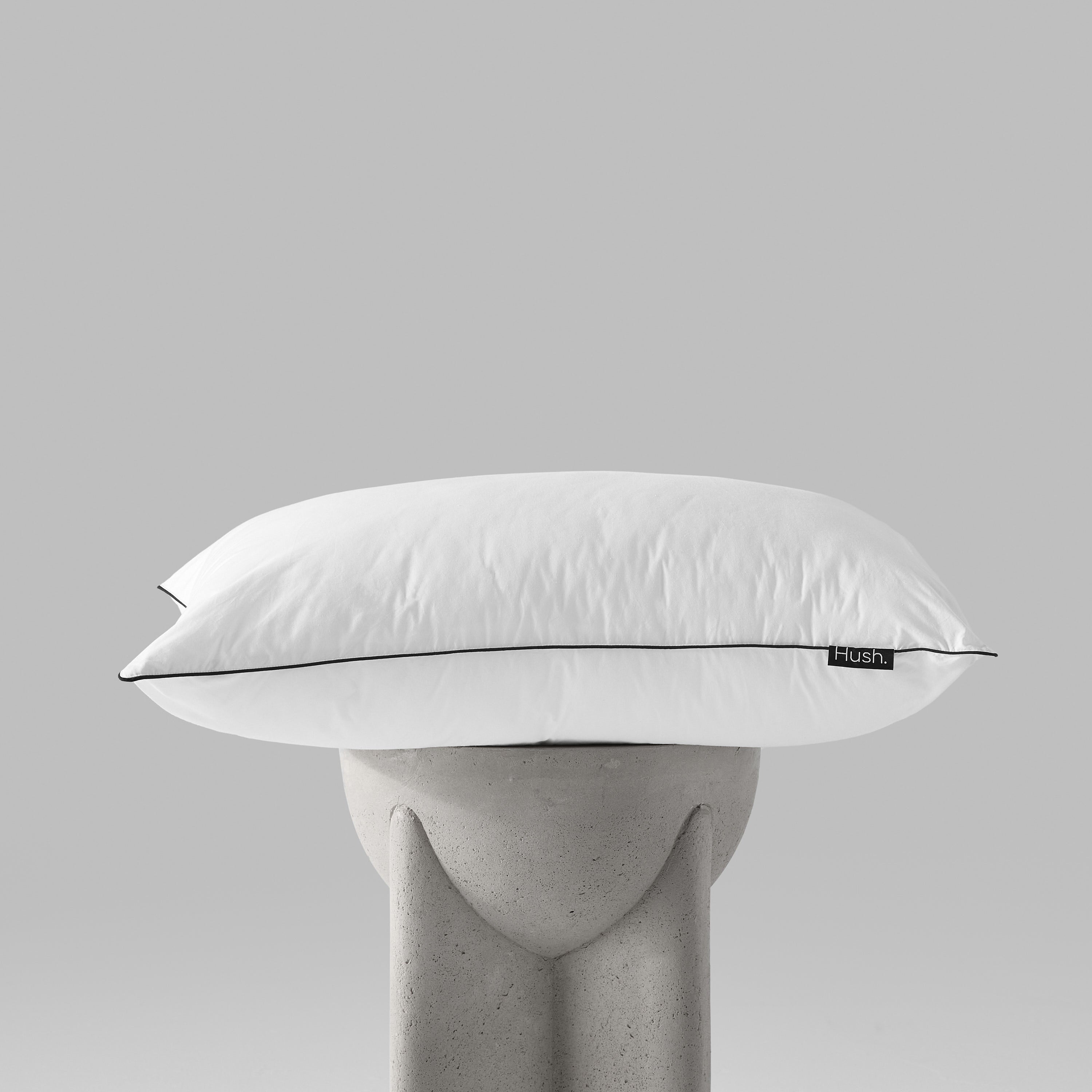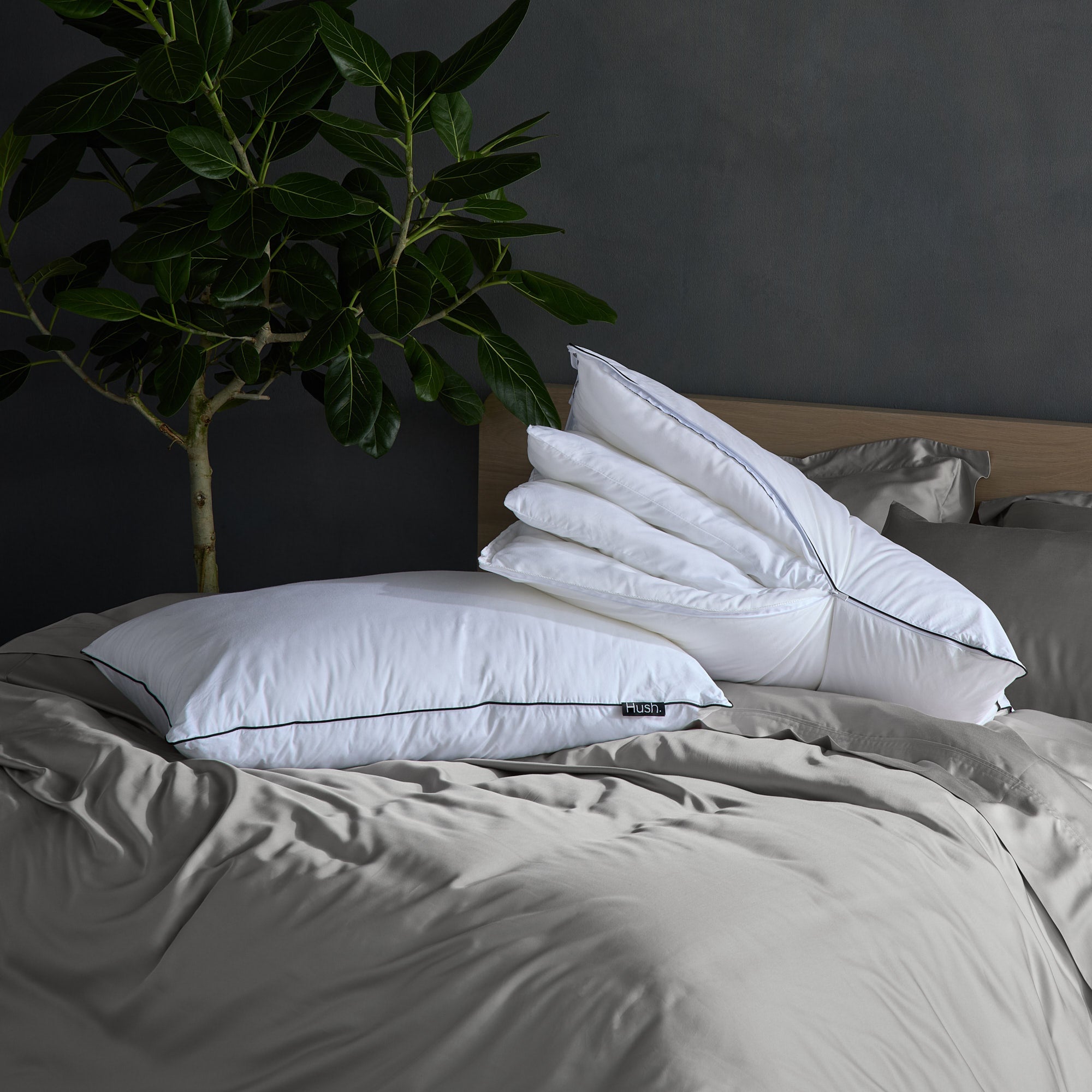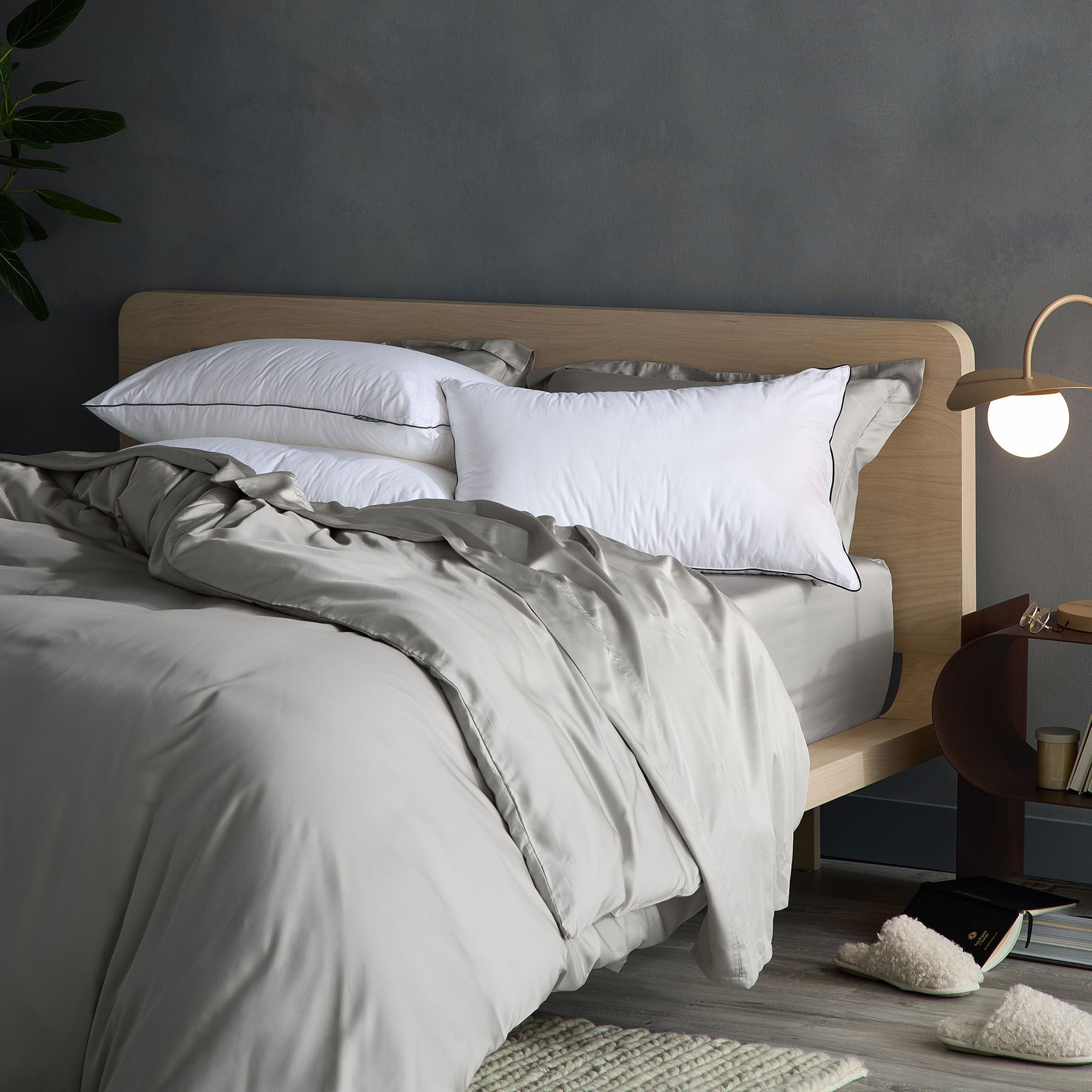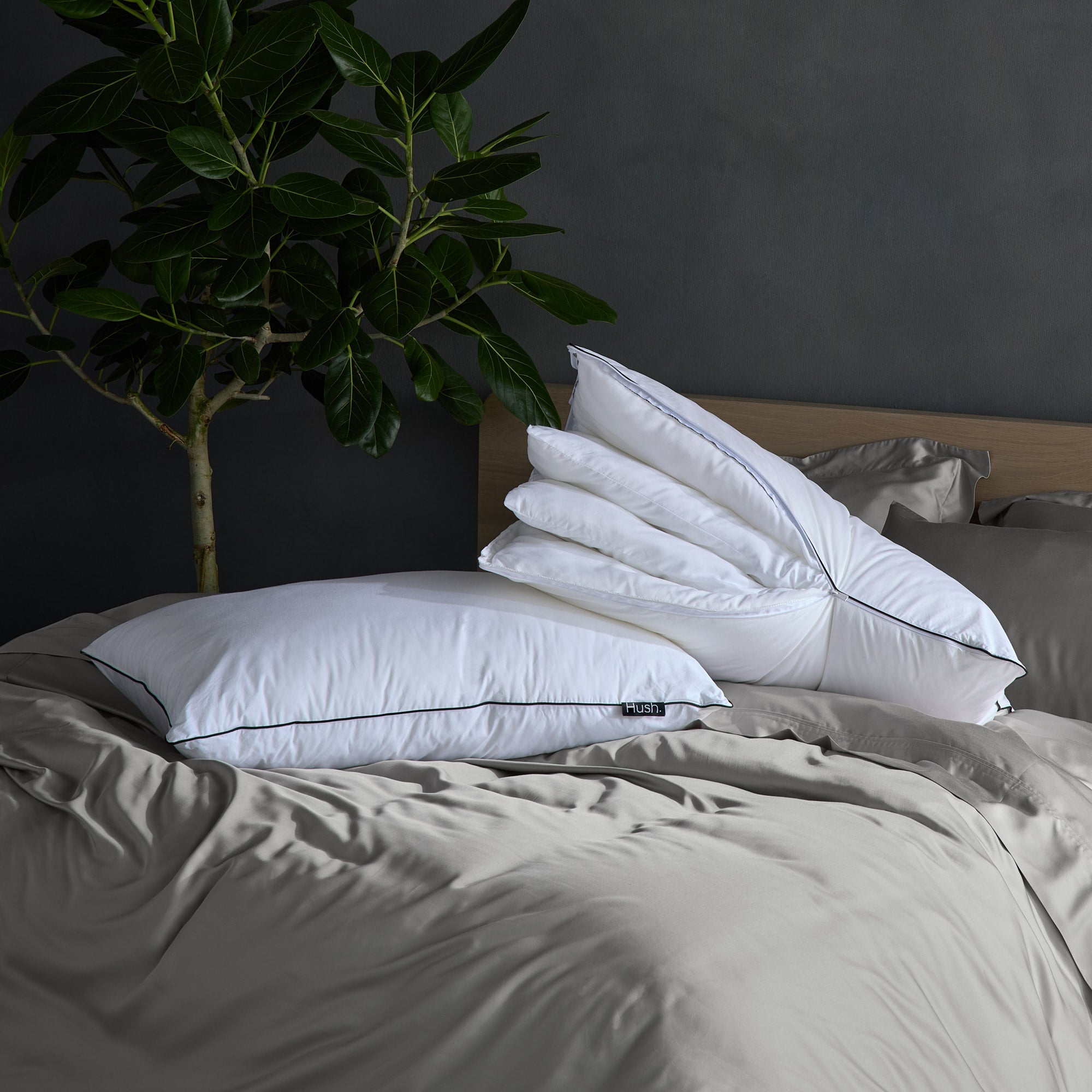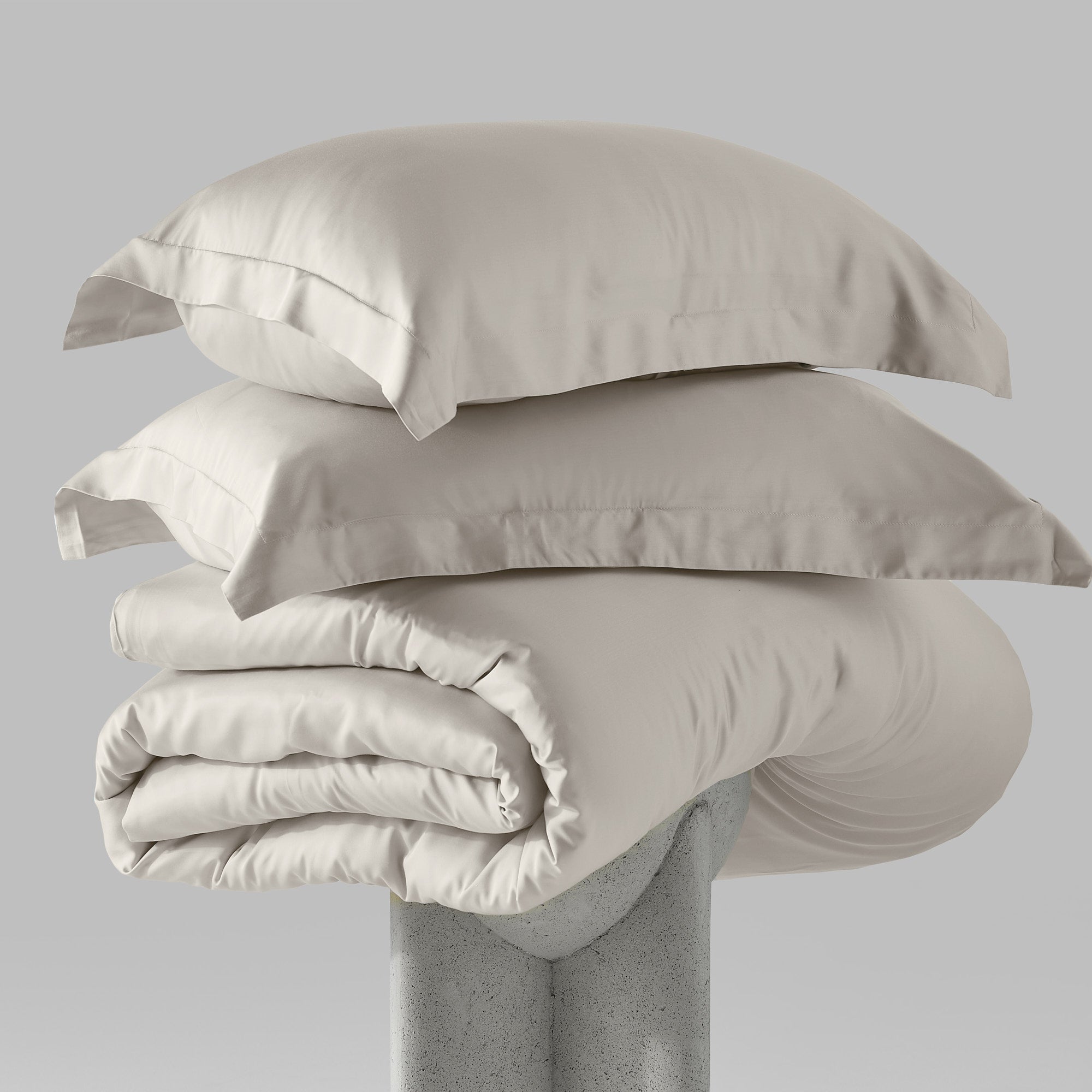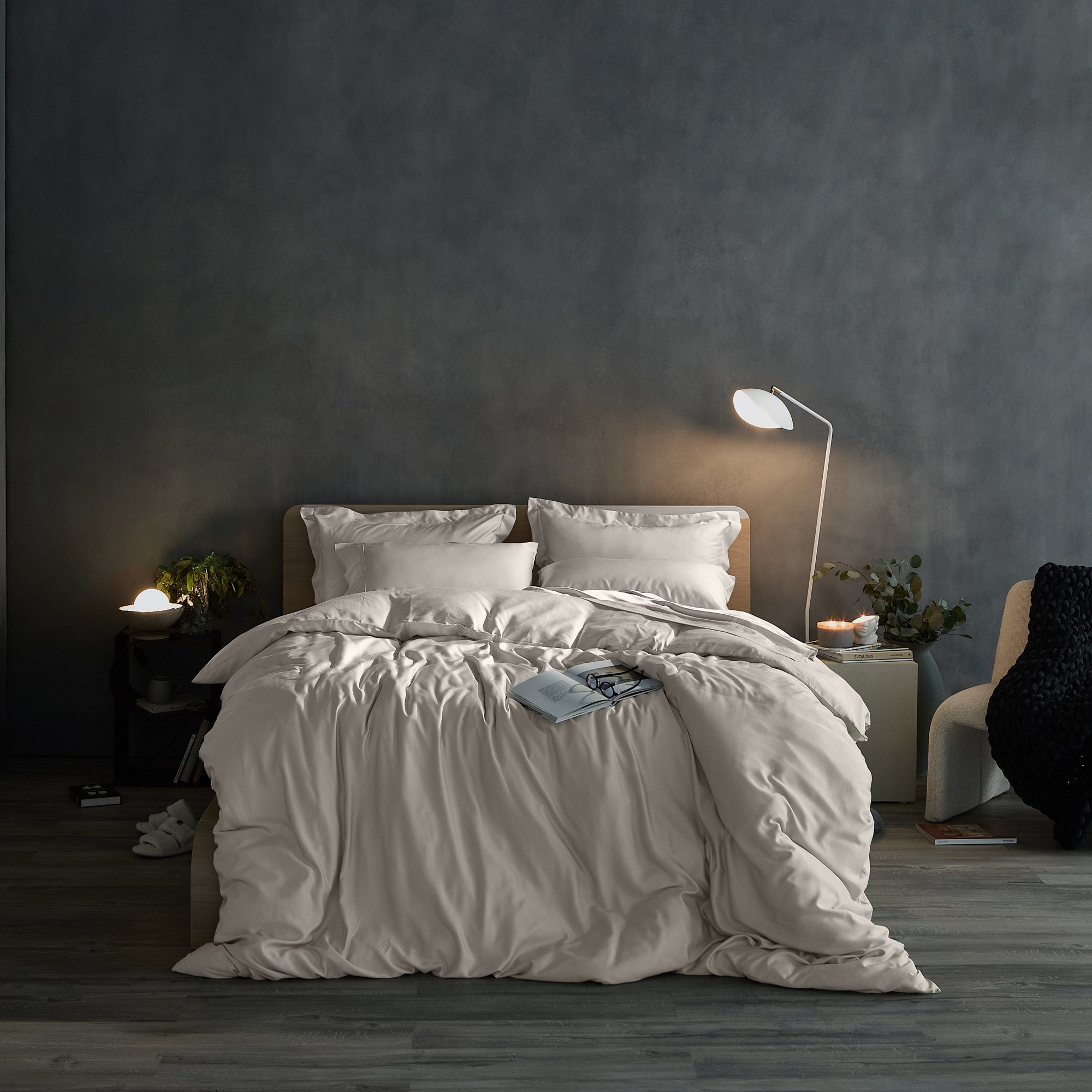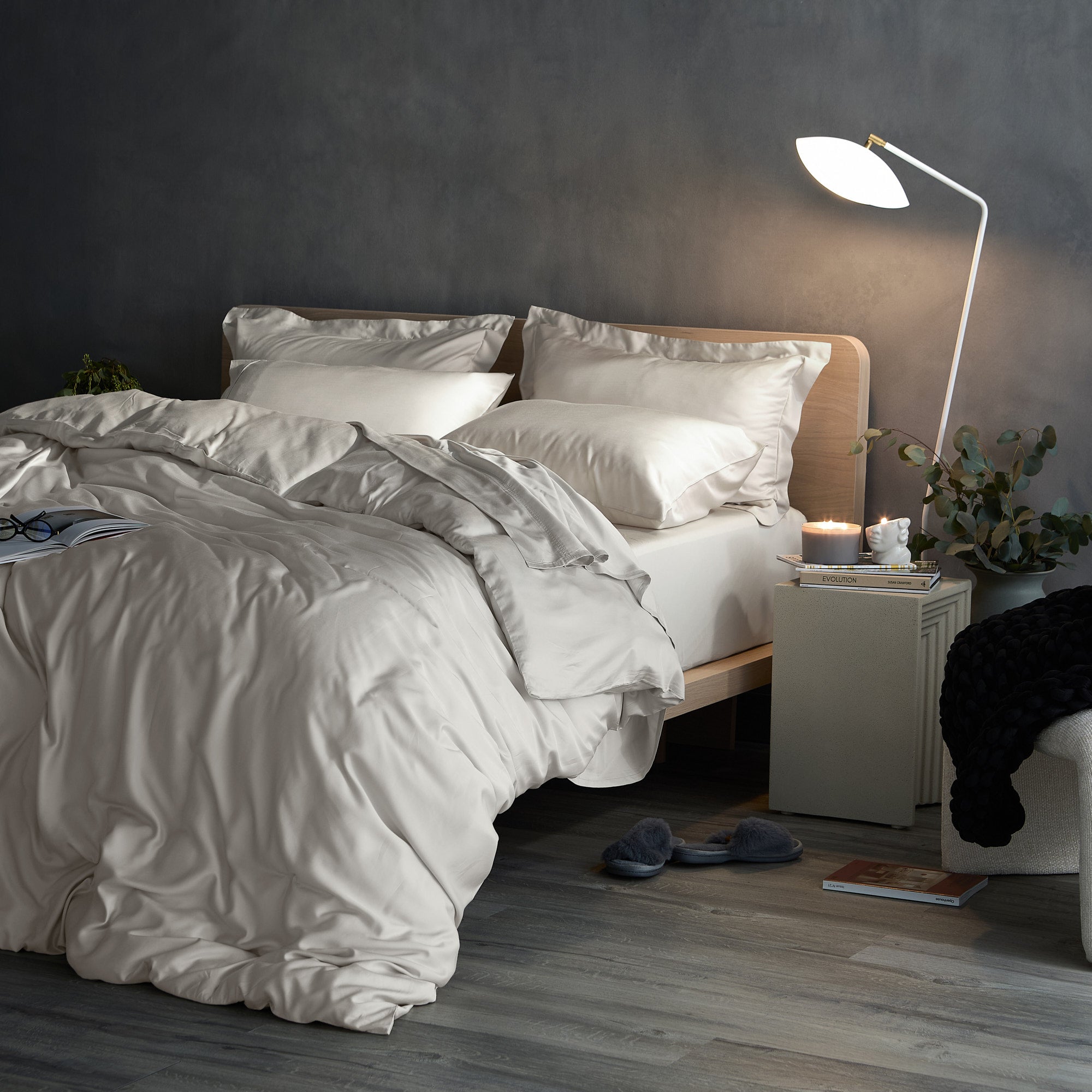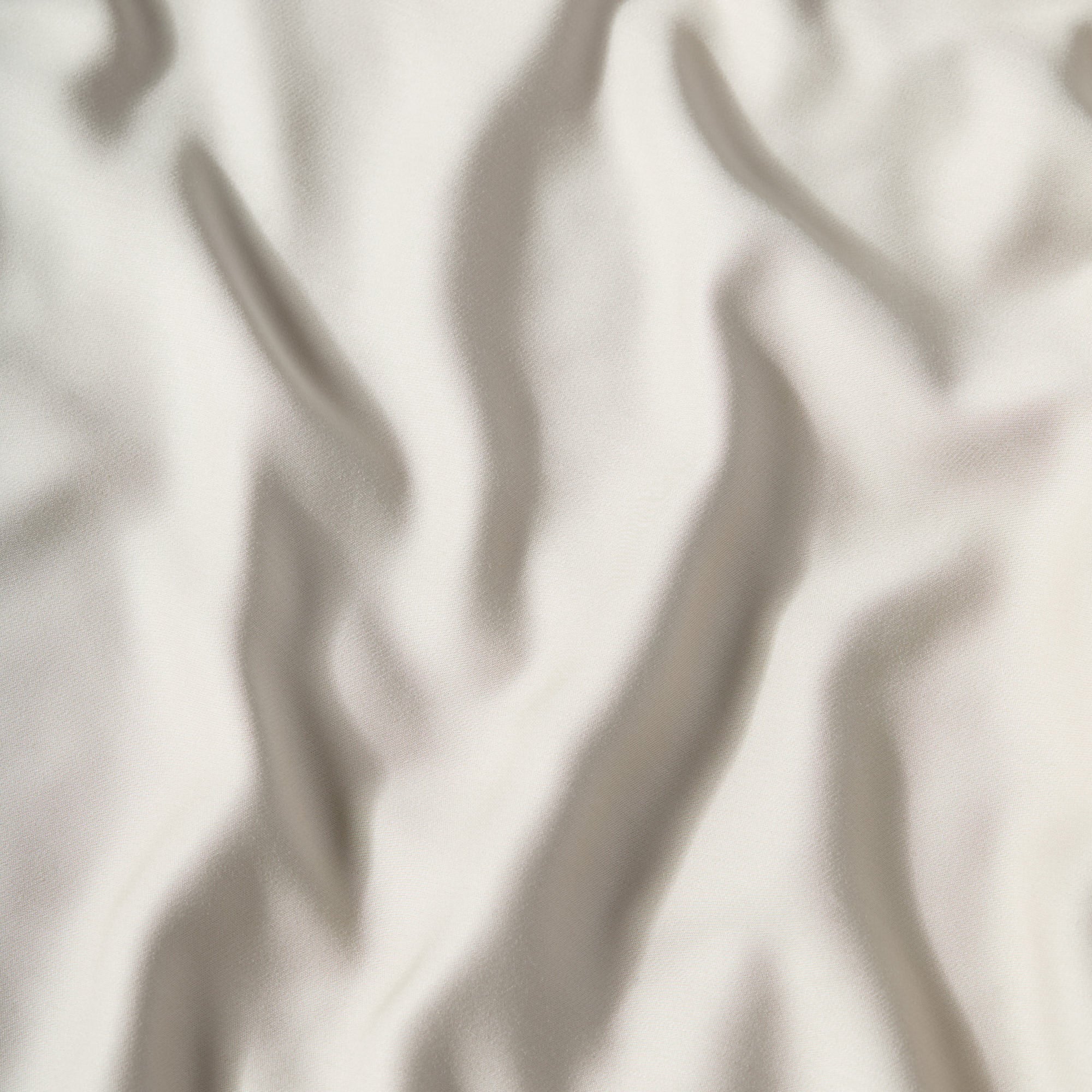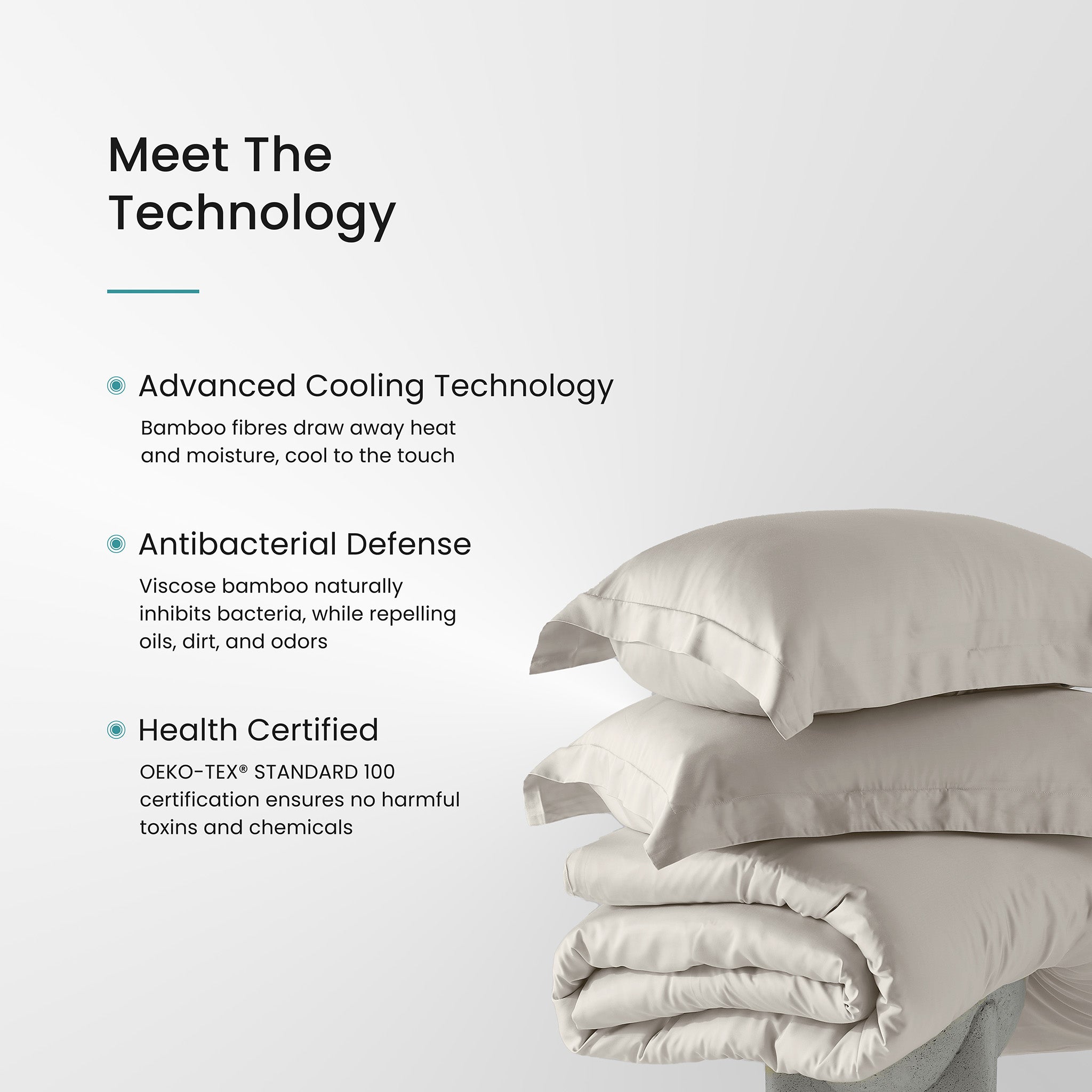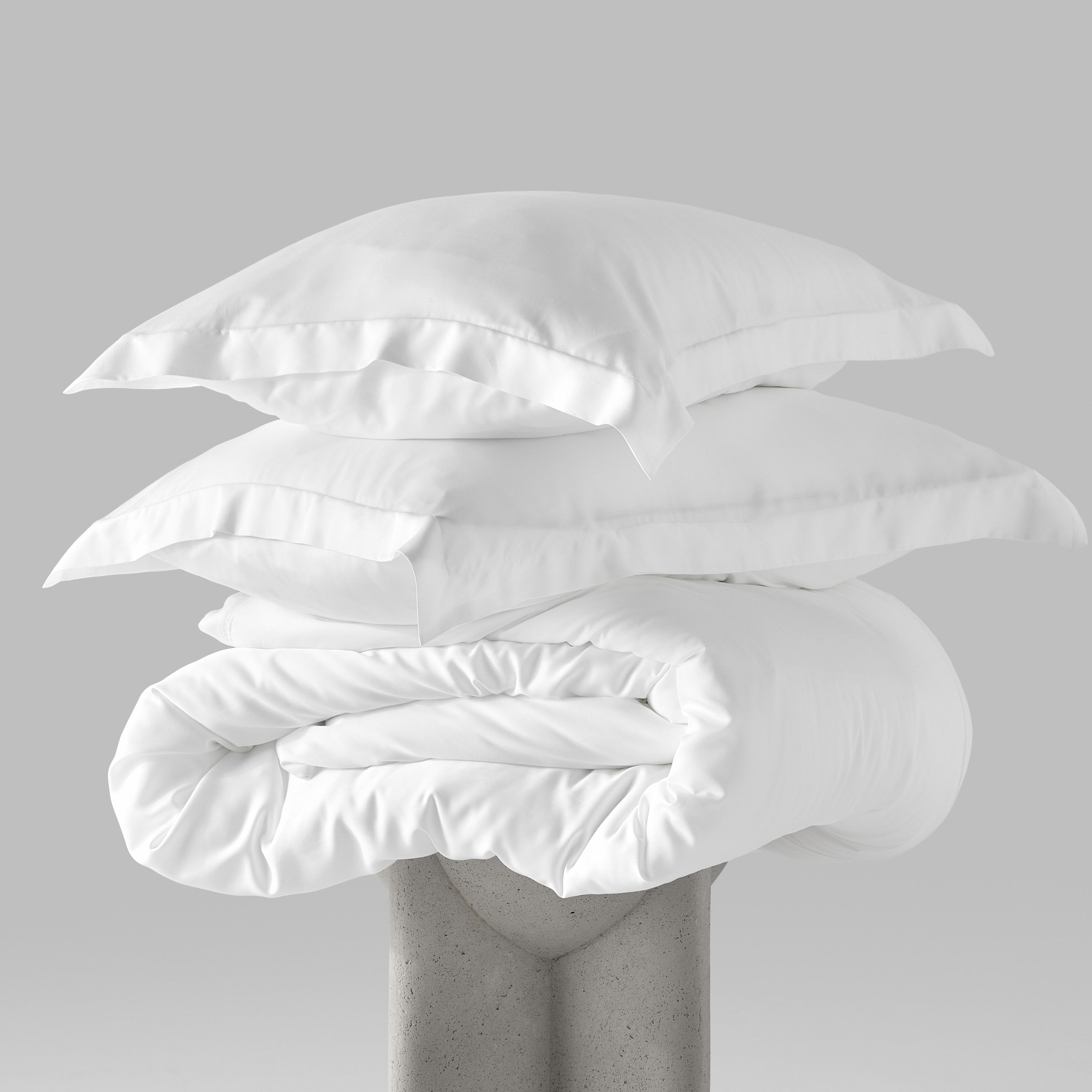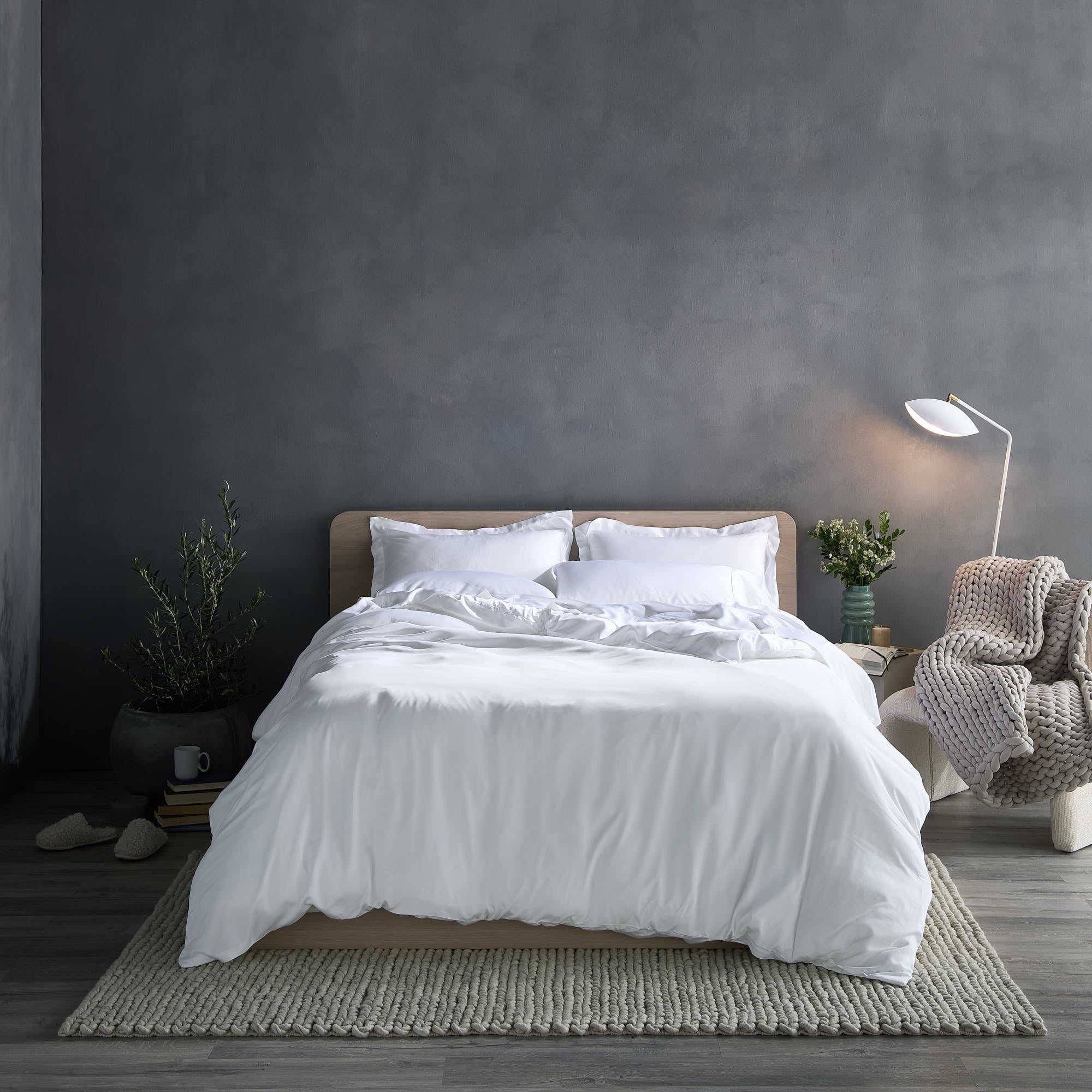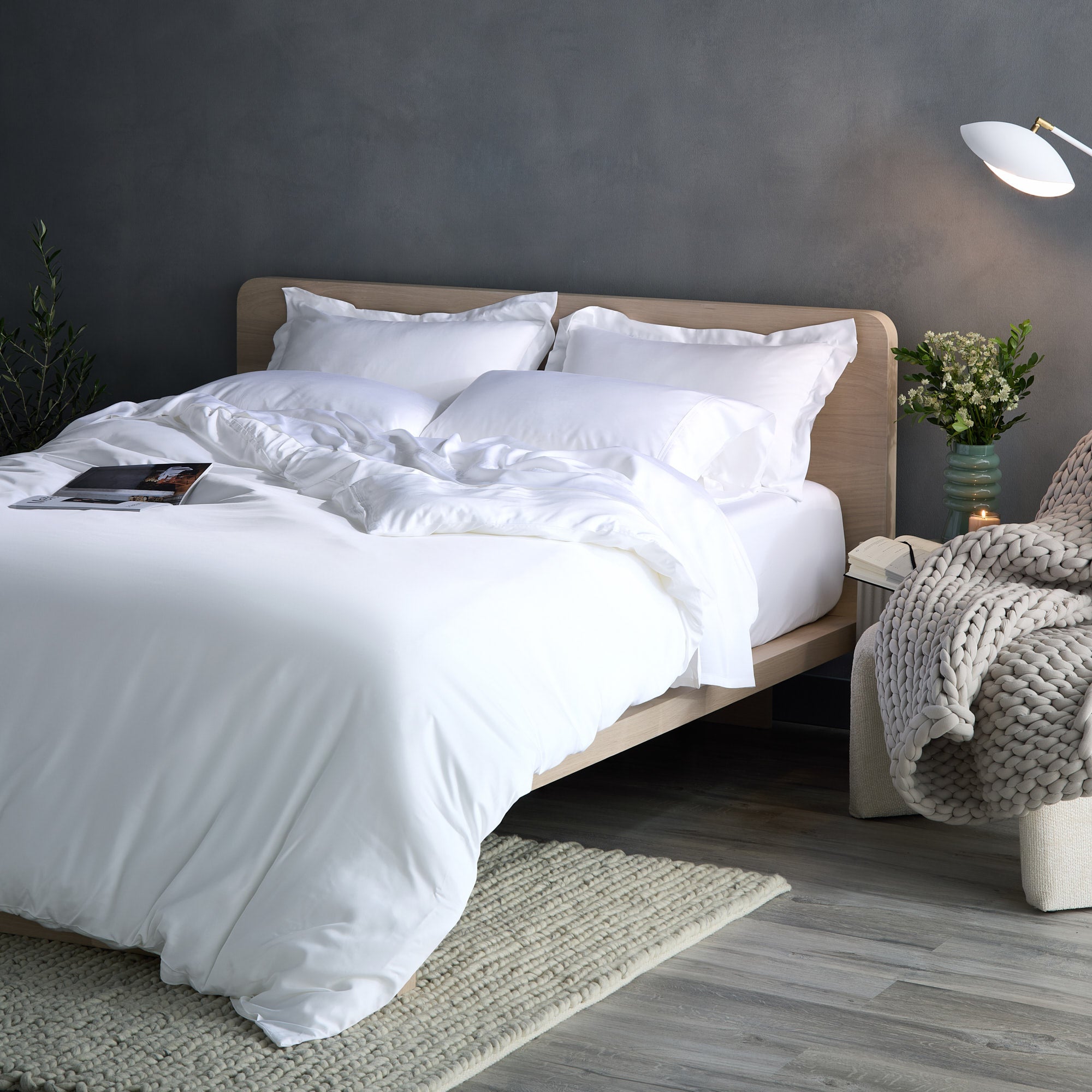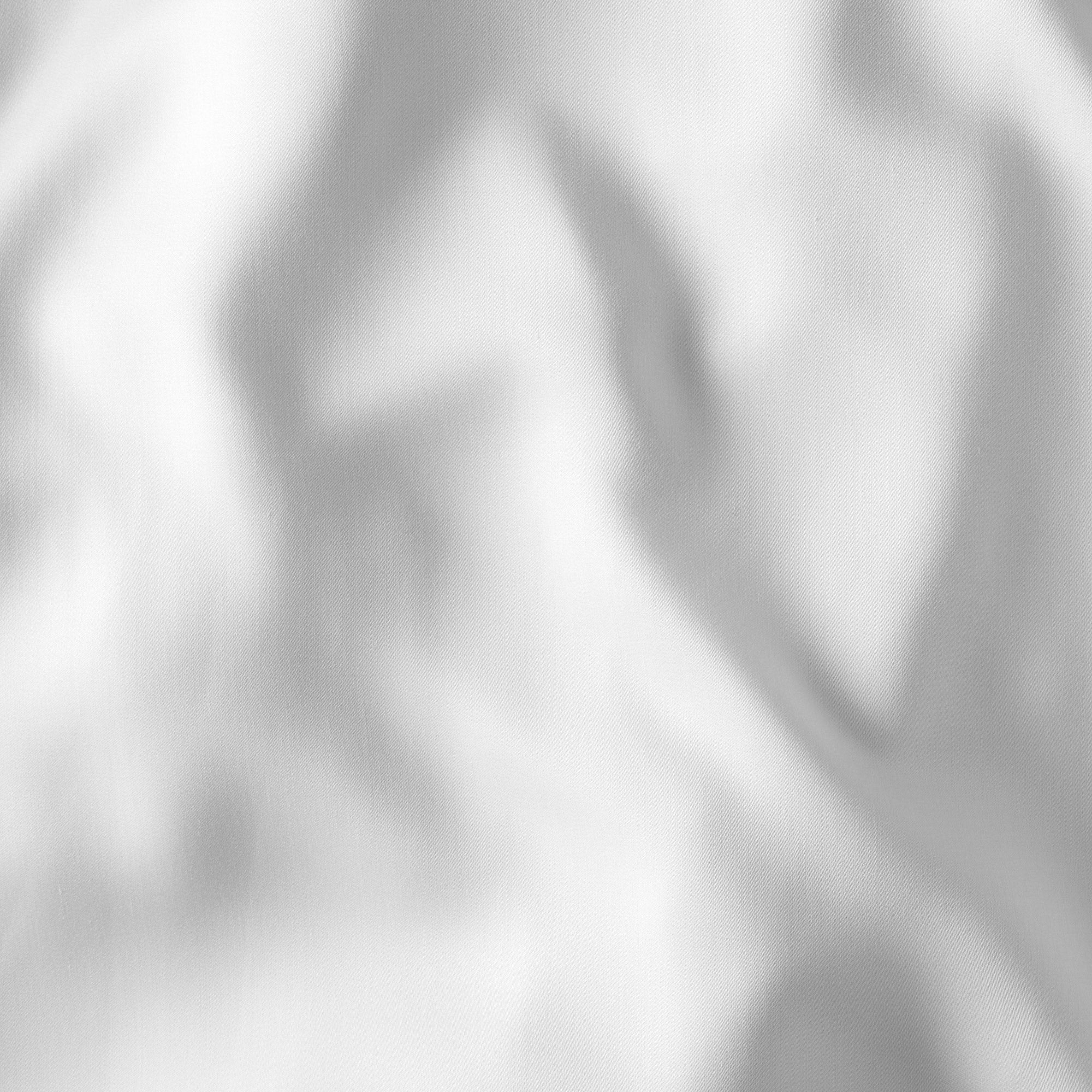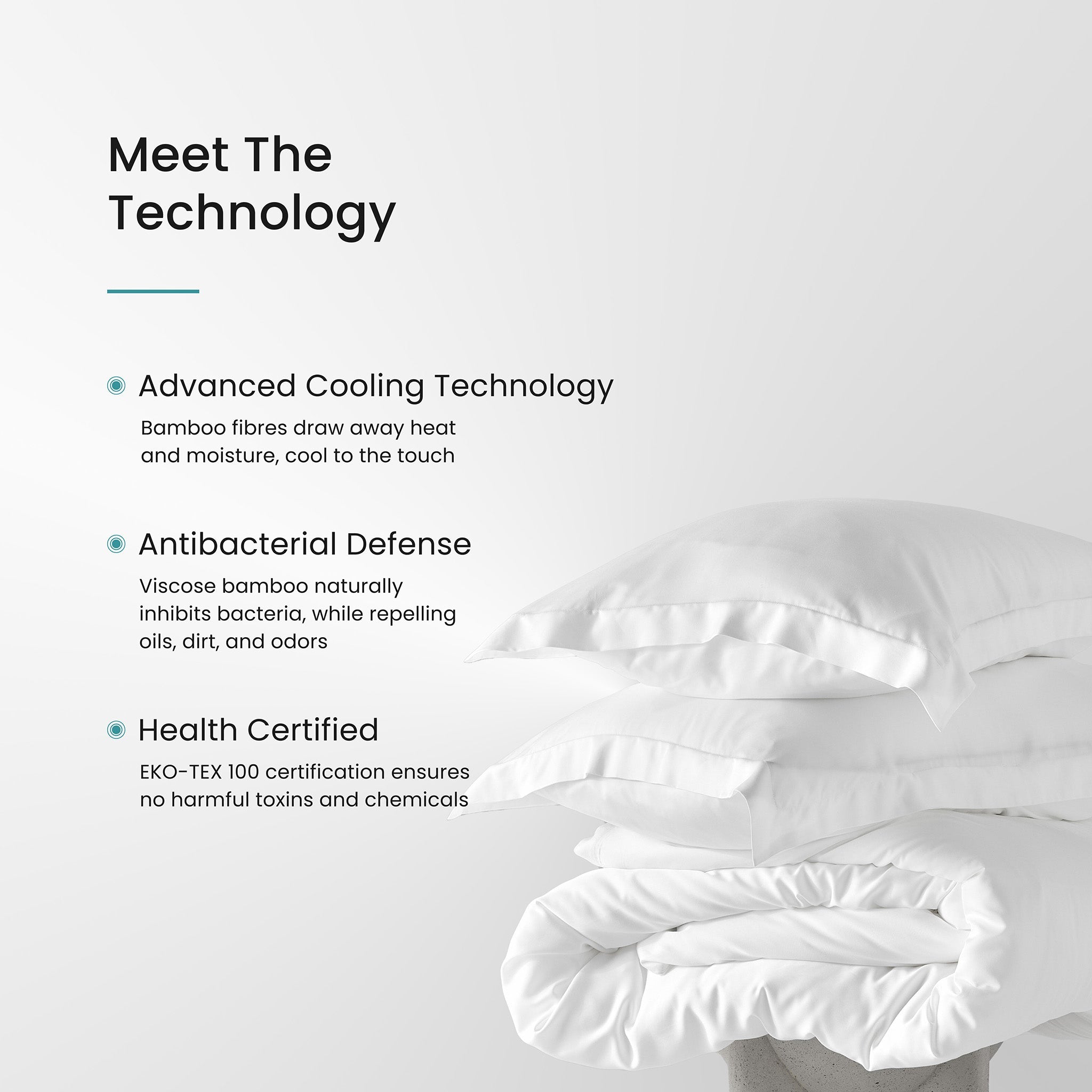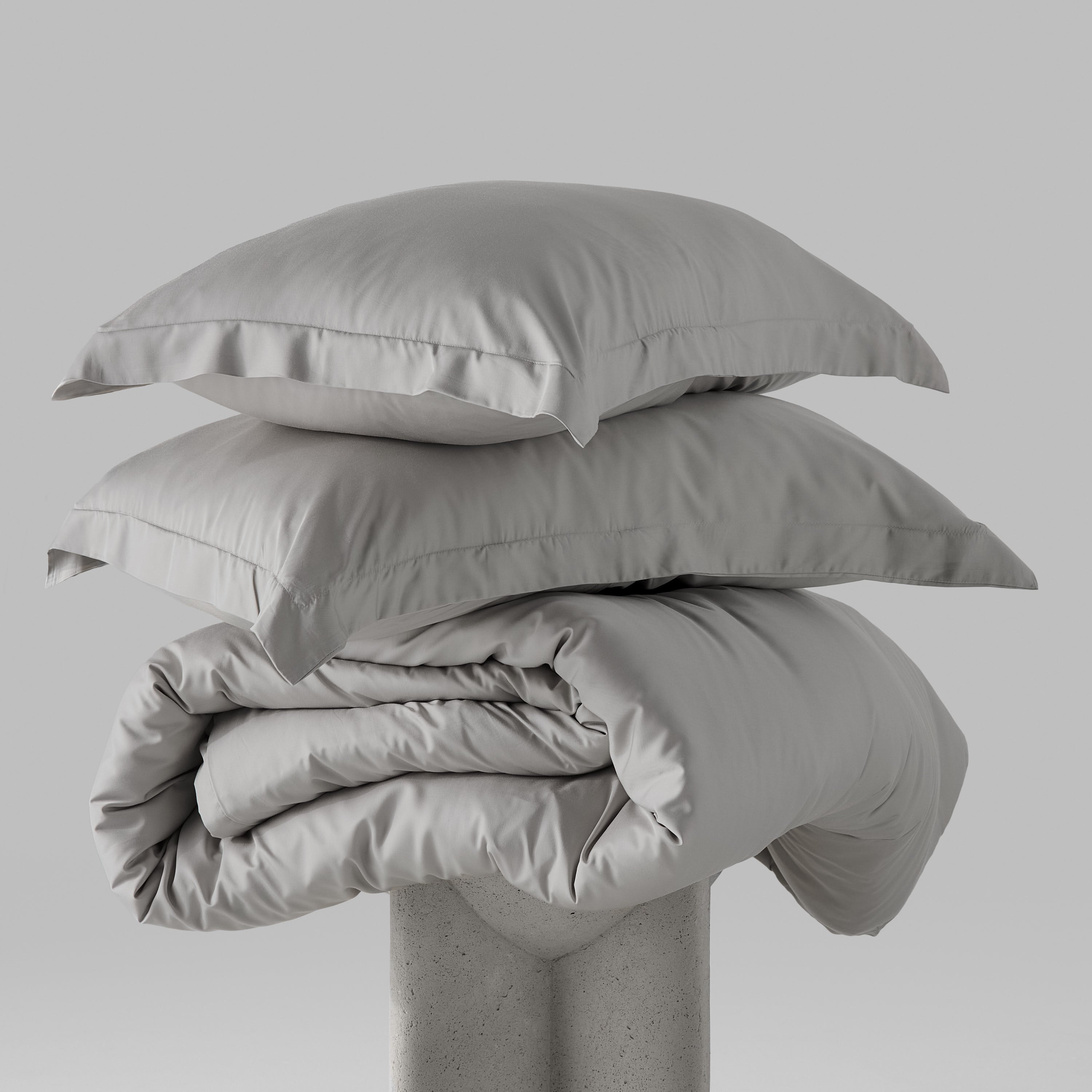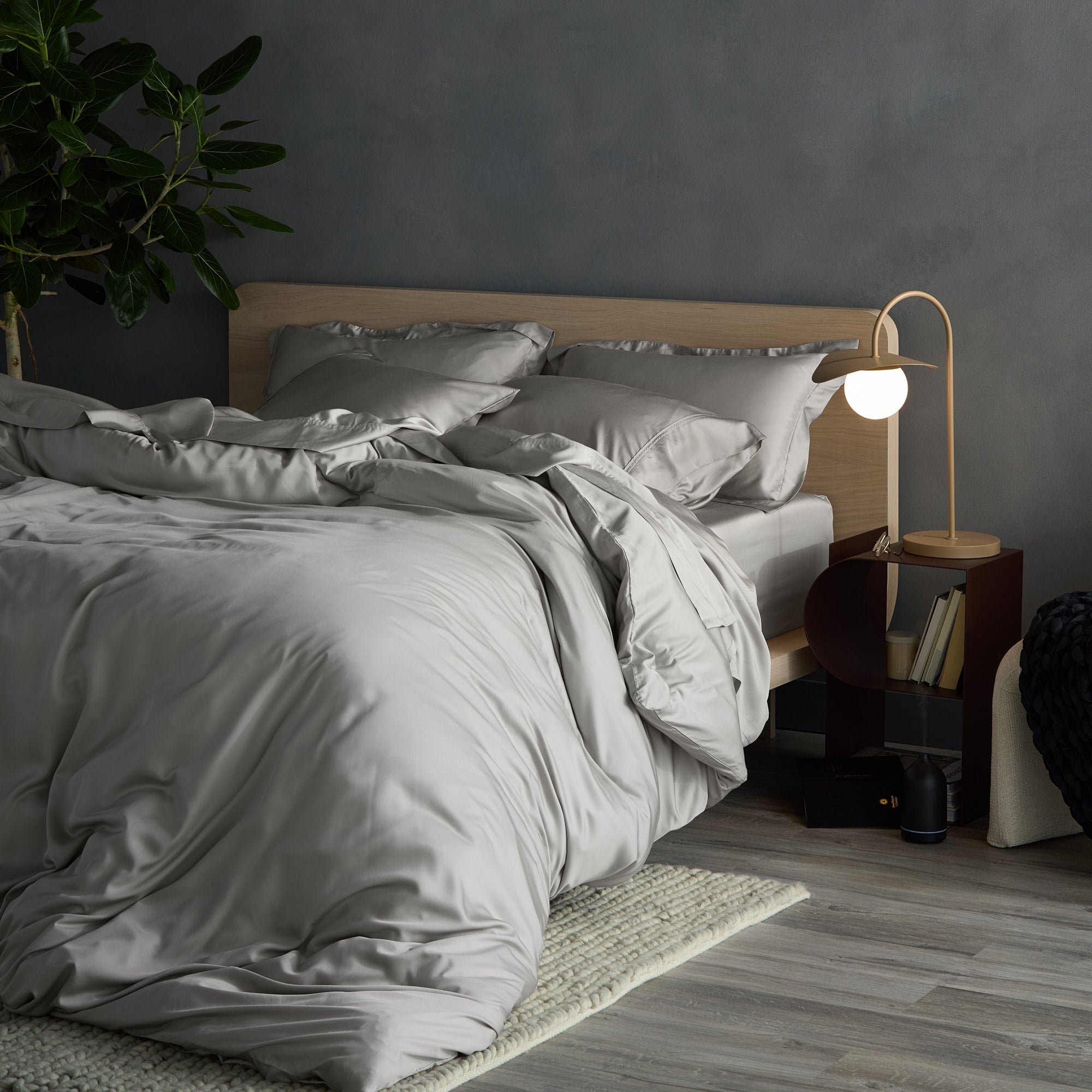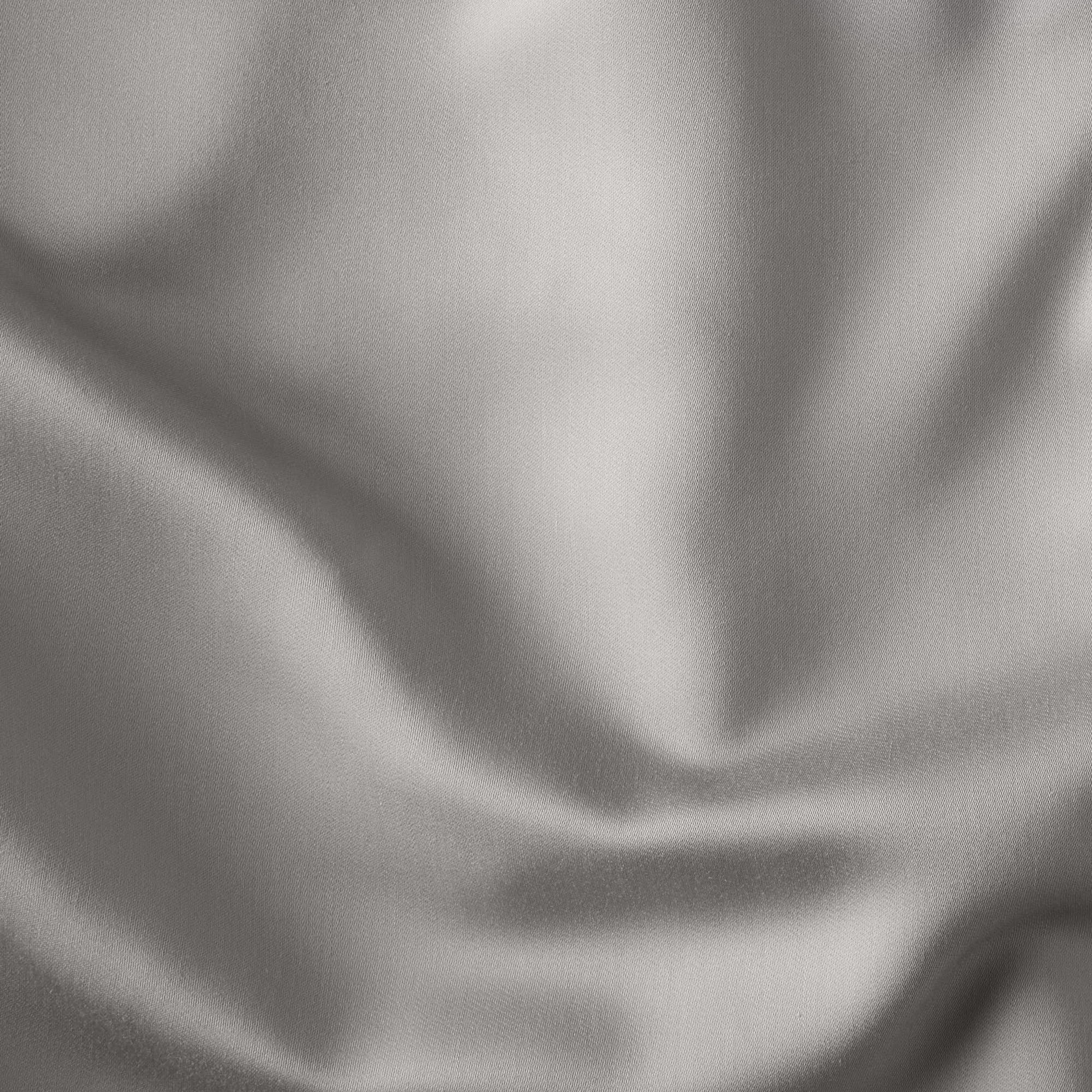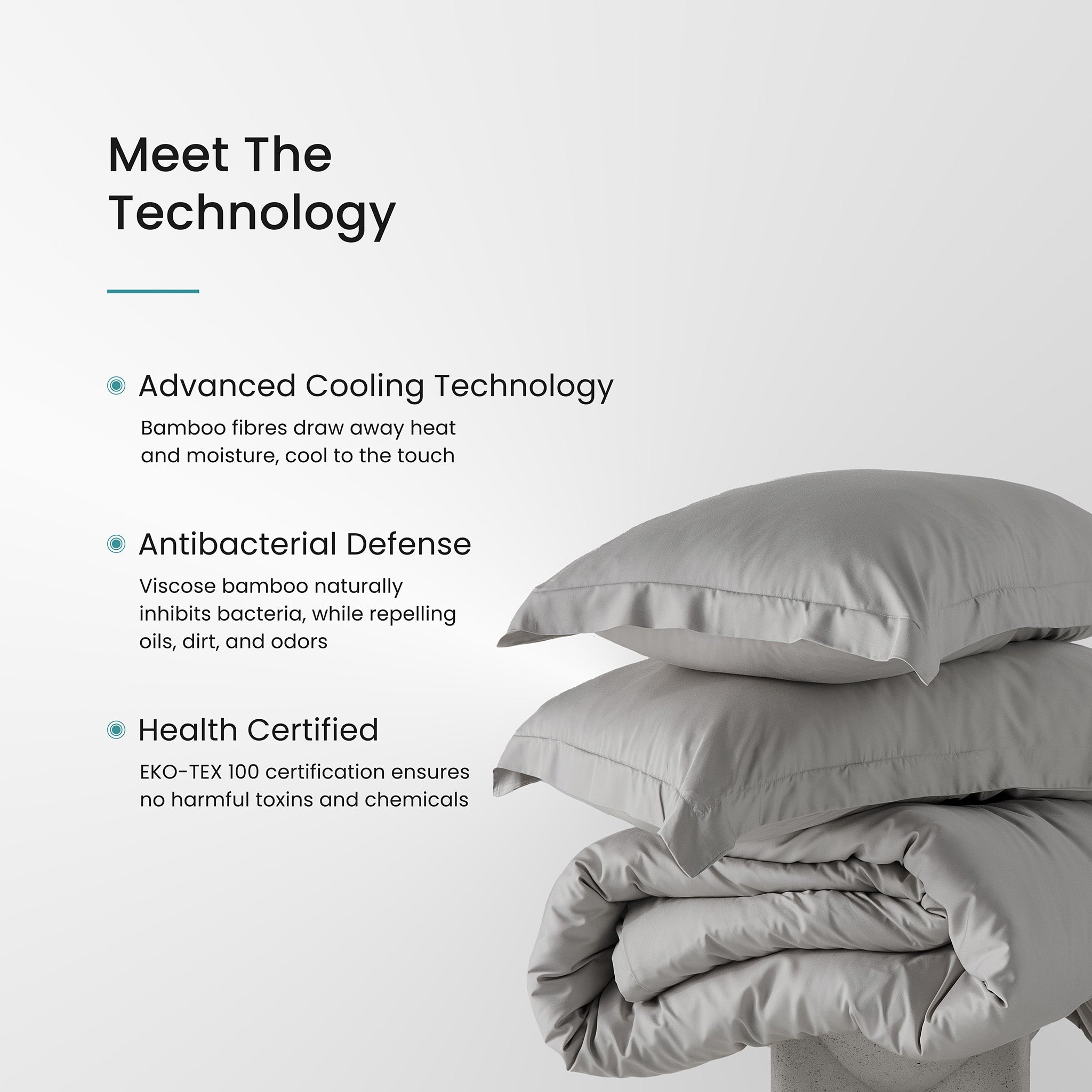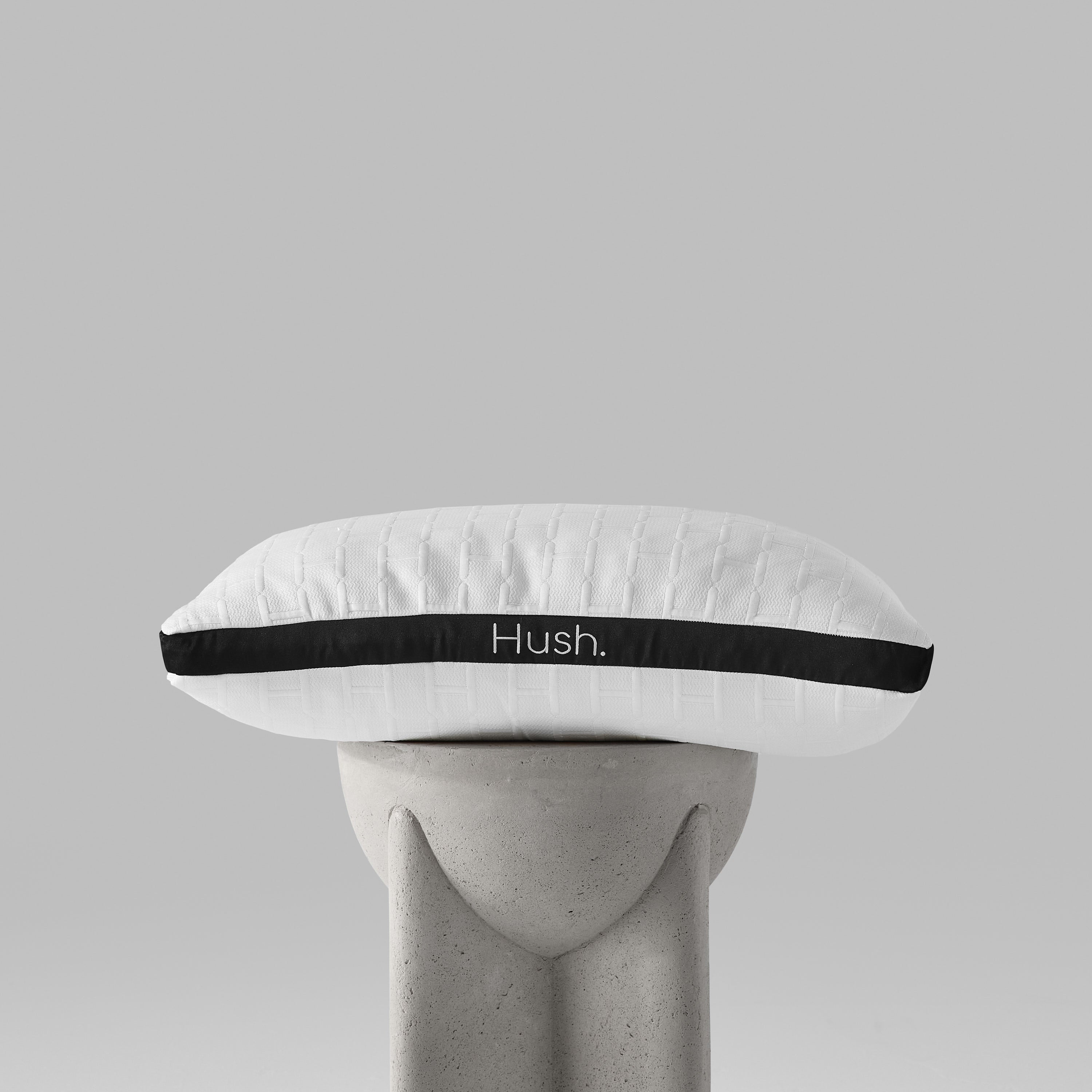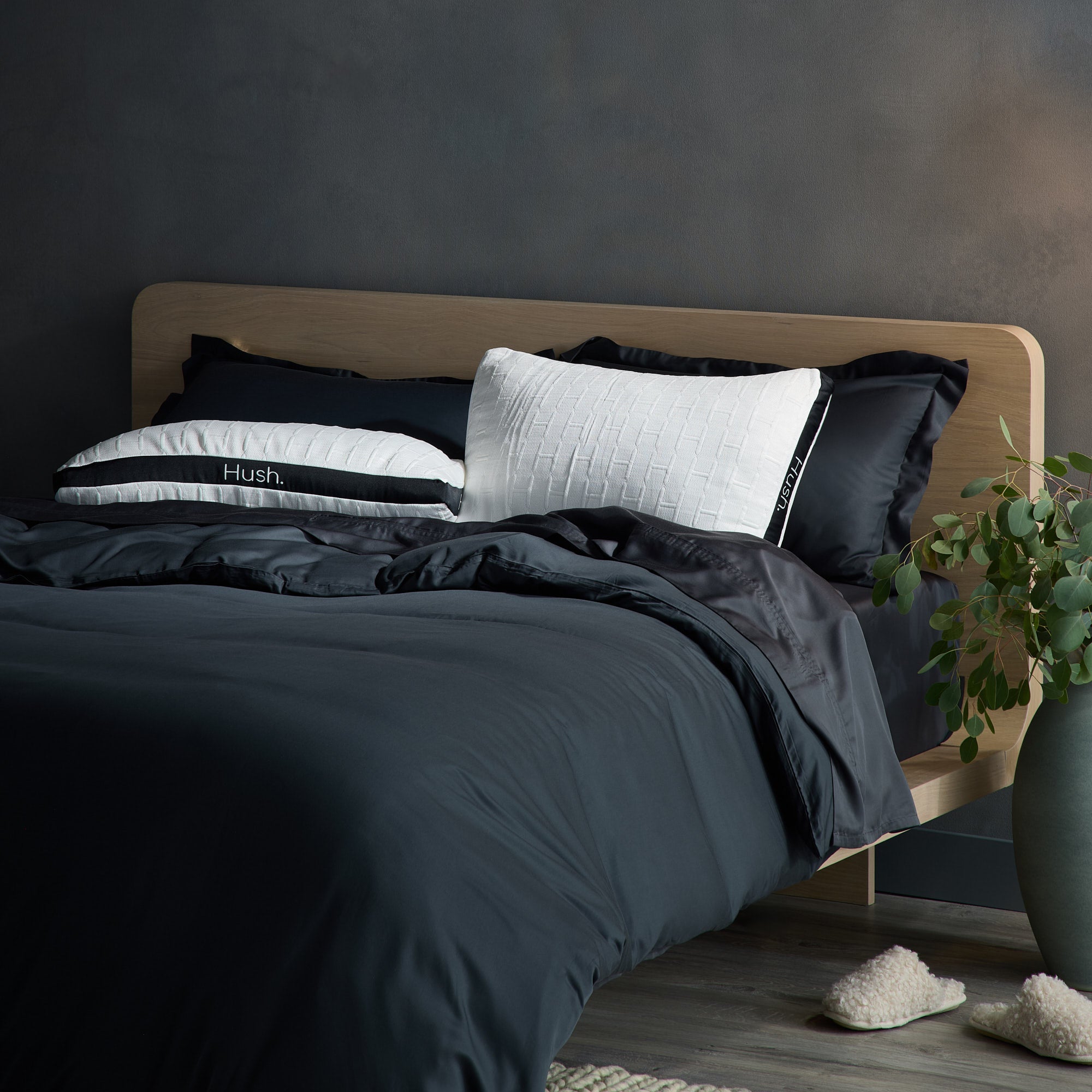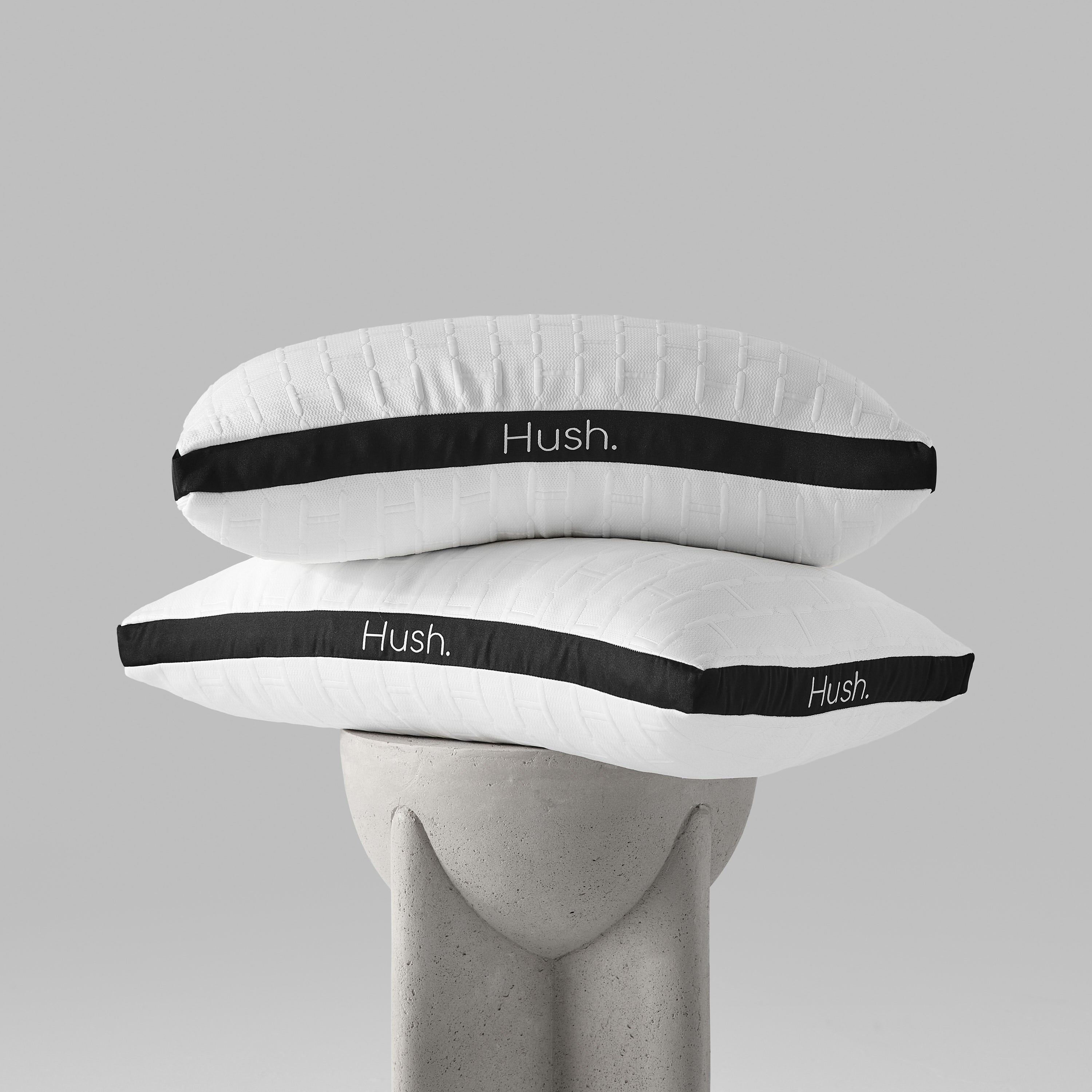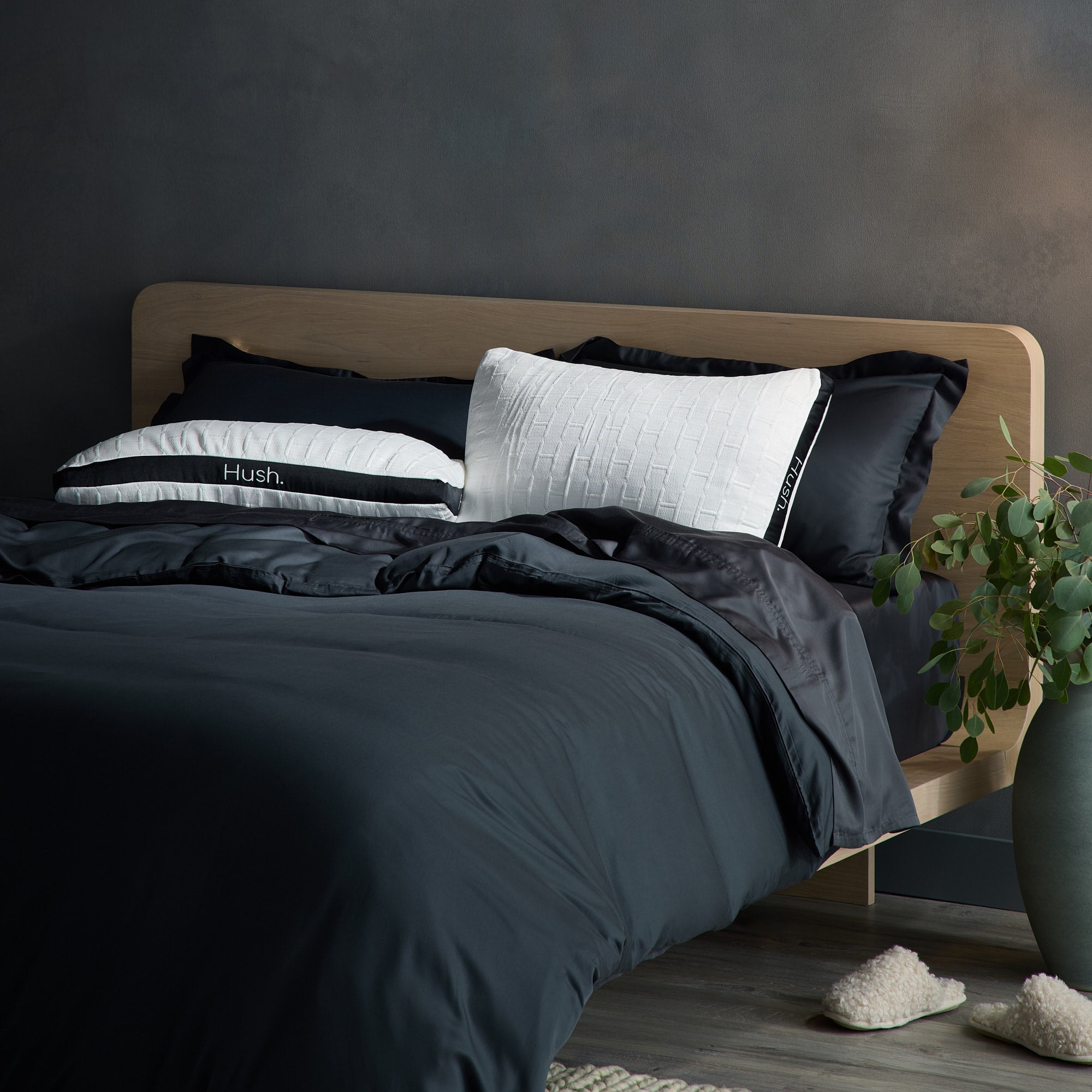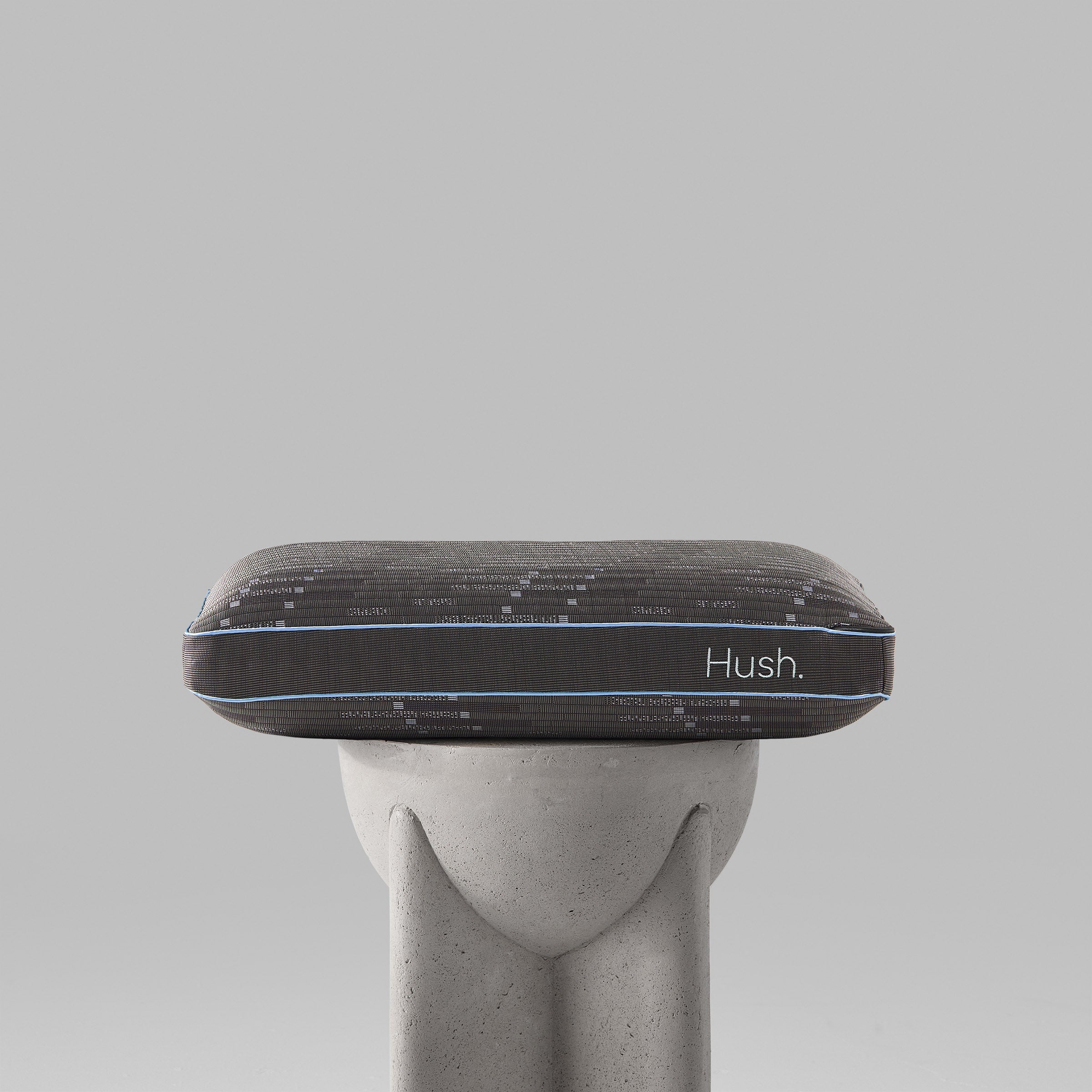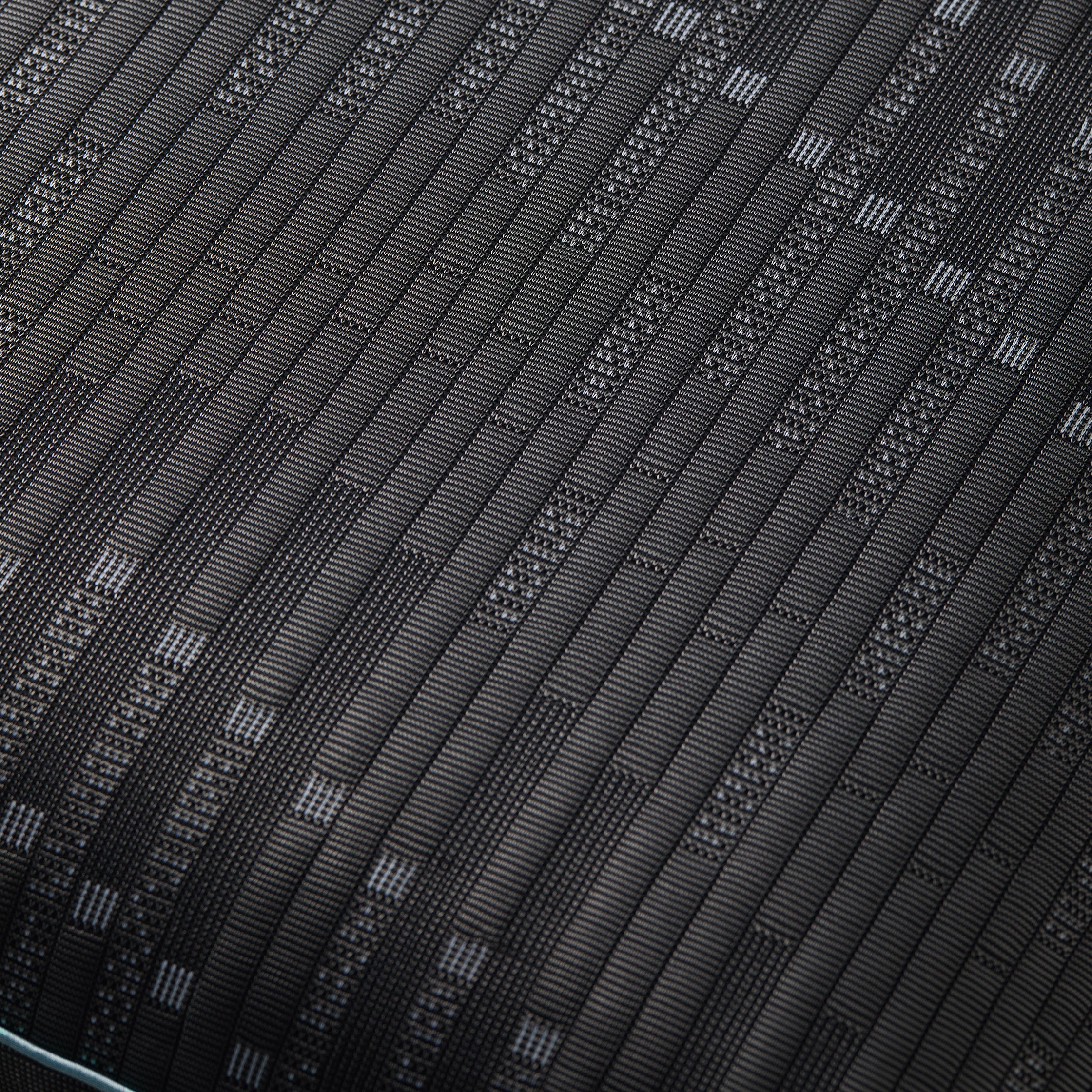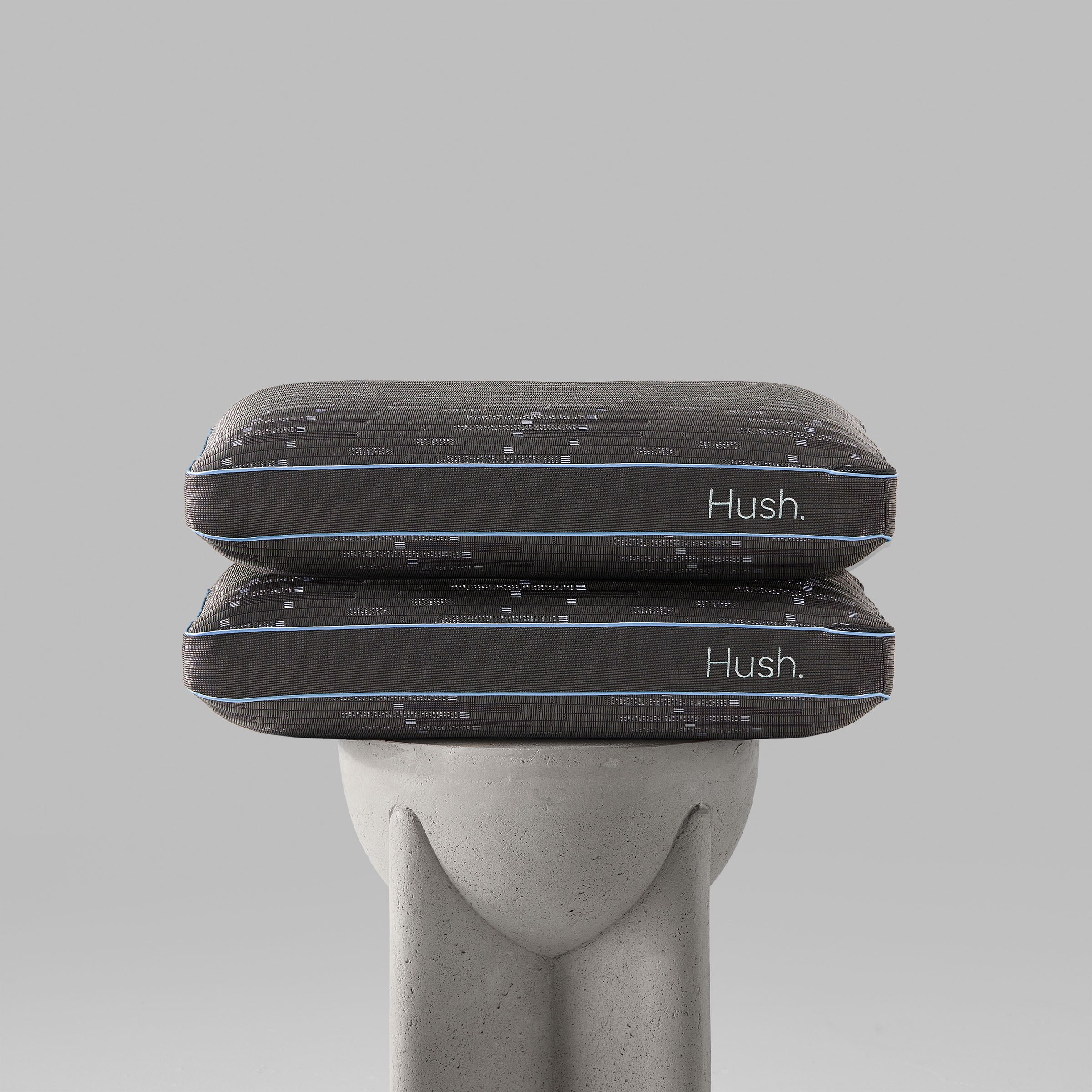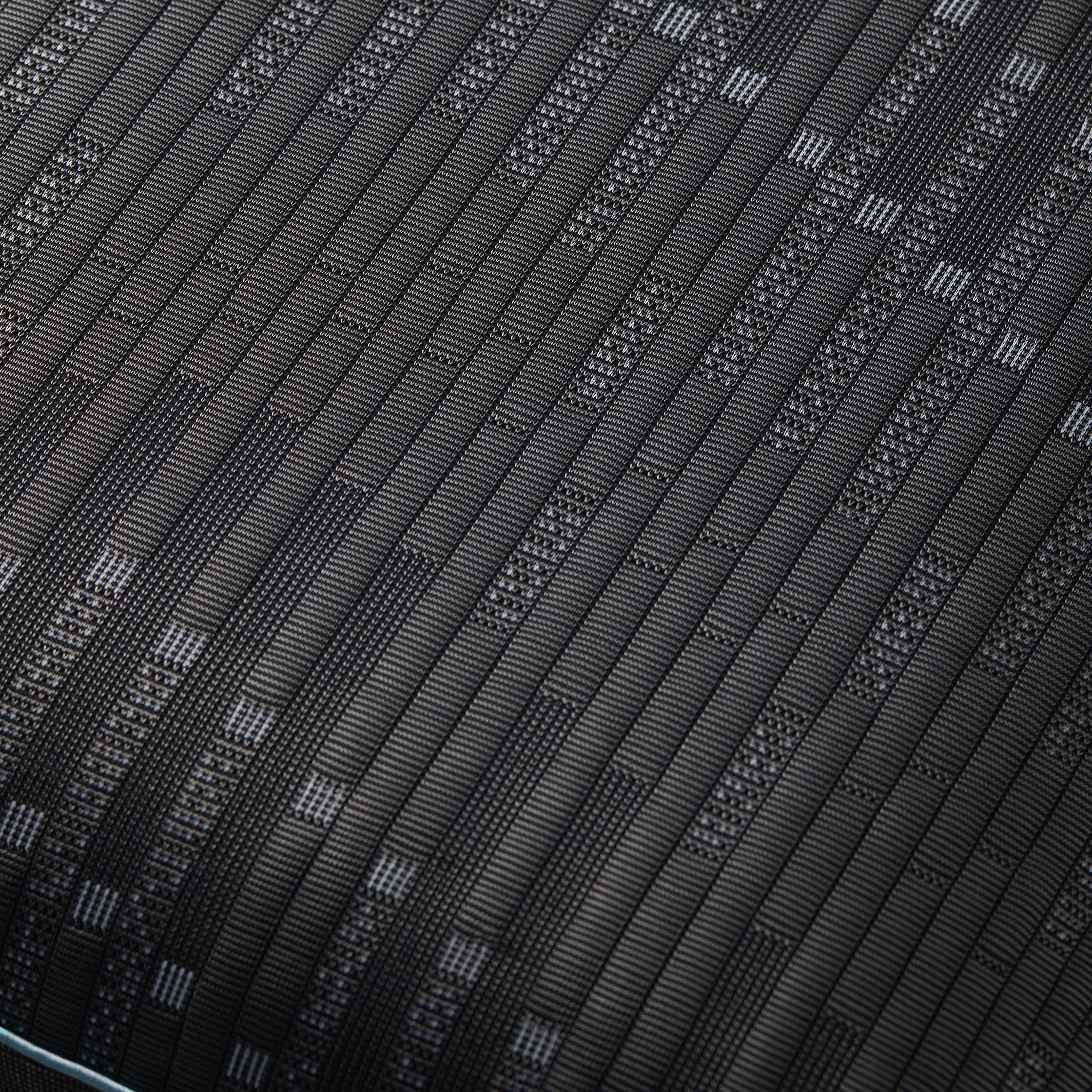
To make your bed a temple of sleep, you need to invest in blankets that provide the right pressure, warmth, and texture. Consider your style and your sleeping temperature to know which of these blankets should be on your bed.
Blanket Types

In the world of blankets, there is a wide range of different fabrics and designs. Let's explore the types of blankets you might choose for your home.
1. Duvets and Comforters
Let's start with whether to choose a duvet or comforter. Both are designed to be on top of other blankets you may use on your bed. They can vary in thickness and fill, so there are options for everyone. Here are some of the major differences between different types of blankets.
Duvets
- Not quilted
- Designed to be used without a top sheet
- Traditionally down blankets
- Require a duvet cover to protect against the quill end of the down poking through
- Allow for you to change the style and color of your blanket without investing in a whole new blanket
Comforters
- Generally quilted. The quilting can vary in size
- Designed to be used with other blankets
- Can be filled with down or synthetic materials
Comforters and their fancy European cousins, duvets, provide a luxuriously deep and fluffy bed covering. They can get very warm, so if you are a hot sleeper, these are not the blankets for you.
2. Weighted Blankets
Weighted blankets are the ultimate sleep tool. Designed to give you deep pressure stimulation, weighted blankets relax the nervous system, boost serotonin, and help you fall and stay asleep faster. This blanket is a must-have for chronic poor sleep sufferers or anyone who wants deeper, more restful sleep.
Weighted blankets can be used in place of a top blanket or along with other types of blankets. Make sure you're taking weight recommendations and restrictions into account when deciding how heavy your weighted blanket should be. Weighted blankets are often either mink or microfiber.
You might also consider a weighted cooling blanket for warm weather. Designed to keep air circulating and pull heat away from you, weighted cooling blankets are a great option for sleepers who want the comfort of a heavy blanket but not the heat. The best cooling weighted blankets are made with bamboo or cotton because of their moisture-wicking abilities.
3. Heated Blankets
Heated blankets are another type of blanket you should consider, especially if you experience winter weather.
Heated blankets, or electric blankets, have wires built into the fabric to warm the blanket. They help you maintain your body temperature while you sleep. This is important because when your temperature yo-yos, you are more likely to wake up. A constant temperature, however, keeps your body in sleep mode.
These blankets are usually made from polyester microfiber, other synthetic fibers, or fleece, as these fabrics are warmer.
You can choose a wired blanket that needs to remain plugged in while you're snuggling under it, or you can have a cordless option that is more portable (remember to charge it). Both are useful. To choose, consider how you'll likely use it. If you are going to use it primarily as a bedspread, perhaps a corded option is best. If you're going to huddle under it during hockey games, choose the cordless option.
4. Quilt
Quilts are both a type of blanket and a method of sewing. These types of blankets are made of three layers of fabric: the woven top and bottom and the inner layer.
The top layer of woven fabric is made by sewing smaller pieces of colorful fabric together. Then, all three layers are "quilted" together to make a warm blanket option.
While styles can vary, quilts are typically flatter than comforters, and the designs are often more intricate. Hand-made quilts are often considered works of art and can be luxury (or even collectors') items. To keep the design integrity, you want to look for a quilt that is made from high-quality cotton fabric for the blanket material.
5. Vellux Blankets
Vellux is a man-made material made from polyurethane foam, adhesive, and nylon fibers. The foam and the limited number of materials make it warm and light. However, it's also sturdy and durable.
Vellux blankets can be found everywhere from sheets to throws. It also can come in multiple colors, so fitting your decor won't be an issue.
6. Waffle Weave Blankets
A waffle weave blanket is a type of fabric that is woven with a raised, textured surface. This creates small squares or diamonds on the fabric, which helps to trap heat and keep you warm. Waffle weave blankets are lightweight and breathable, making them a good option for year-round use. However, on cold winter nights, they are best combined with a heavier blanket for extra warmth.
7. Acrylic Blankets
Acrylic is a durable synthetic fiber typically available in solid basic colors. The acrylic fabric is lightweight, making it ideal for warmer weather use. It can also be blended with other fabrics to create blankets of different weights and textures. For example, acrylic fibers are often combined with polyester or cotton to make them softer and more comfortable for sleeping under. Satin-trimmed acrylic blankets are a popular option for those who want a little luxury in their lives.
8. Mink Blankets
Don't worry; no animal was harmed in the making of this blanket! Mink blankets are made from acrylic or polyester, which gives them a soft, luxurious feel. Mink blankets come in a variety of colors and designs, so you can find the perfect one to match your style. Also known as 'faux mink', these types of blankets are a good option for those who want the look and feel of mink without the expense or ethical concerns.
9. Crochet Blankets
A crochet blanket is a handmade item that is made from a single piece of yarn. This type of blanket is often very thick and can be quite heavy. Crochet blankets are a good option for those who want a durable, heirloom-quality blanket. If you can crochet, you can even make a blanket yourself if you have the time and inclination.
10. Silk Blankets
Silk is a luxurious fabric that is soft, smooth, and lightweight. It is often used to make blankets because it can be easily dyed in a variety of colors, and it stays cool in summer and warm in winter. Silk blankets are perfect for all-year use, but they can be a bit pricey compared to other types of blankets.
Best Fabrics For Thin Blankets (Coverlets)
Coverlets are thin bed blankets that add comfort and luxury to your bedding. You may not need that thin blanket at the edge of your bed, but its texture and color really tie the room together.
Choose a coverlet fabric that fits your personal preference:
- Cotton: Cotton blankets are super common and are made from a natural material. The breathability of cotton keeps you from overheating, especially during warmer months. Cotton is hypoallergenic, which makes it a great choice for people who may have skin sensitivities. It is more expensive than other types of blankets, but it can last a long time if cared for properly.
- Bamboo: Bamboo blankets hit the cross-section of sustainability and usefulness. Bamboo is renewable and strong, which means bamboo blankets are affordable and durable. They are also hypoallergenic, so they are a good choice for people who suffer from allergies or need to take special care of their sensitive skin. They are also antibacterial. Bamboo is a highly breathable material, which makes them more comfortable.
- Microfiber: Microfiber blankets are made from blended fabric, usually with polyester as the base. Because it is a synthetic material, it breathes less than cotton, so it retains more heat. It's also more affordable than cotton. They also come in a wide range of different colors.
Different Types of Throw Blankets

Throw blankets are wonderful additions to your decor. Tossed over the back of a chair or stacked in a basket beside the couch, throw blankets invite you and your guests to get cozy. They lend an air of comfort and ease to your room. Plus, they're always around to wrap you in warmth whenever — and wherever — you need it.
Throws are usually smaller than traditional bed-size blankets and are often made from different materials. Having multiple throws in a variety of fabrics and textures turns your couch into a wonderful Hygge experience.
1. Chenille Blankets
Chenille is one of the softest fabrics. It is named for the French word "caterpillar," and it is easy to see why. It's made by sewing silken fabric into another fabric, which gives it more vertical fibers and a raised effect. While cotton is typically used to make chenille blankets, synthetic fabrics can be used too.
Its super-softness makes chenille a popular fabric. Chenille throws offer a mid-level amount of warmth with abundant lightness. Another benefit of these types of blankets is you can machine wash them and keep the softness intact.
2. Sherpa Blankets
Sherpa is a faux wool synthetic, which makes it fairly affordable. The synthetic materials used are usually acrylic and nylon. The fibers are gathered and bundled to resemble wool. Sherpa makes for a warm blanket, and it also has the ability to wick away moisture from your body.
3. Wool Blankets
Wool blankets are typically made from sheep, alpaca, or goat hair. They are very warm blankets. The natural fibers are absorbent, so they keep you dry, which makes sense. Wool can irritate skin, and some people experience allergic flares to the fiber. If you want the warmth of wool without the itch, consider springing for a cashmere blanket.
4. Afghan Blankets
Afghan blankets can be made from a range of fibers and are usually crocheted or knitted. Their warmth, heaviness, and breathability depend on the fabric and density of construction. Afghans can come in bright, bold colors or muted, neutral tones. All of them add coziness to a room, whether tossed over the back of an accent chair or the edge of the bed.
What to Consider When Buying a Blanket?
Everyone has their personal preferences when it comes to blankets. For some, the weight of the blanket is what makes them feel comfortable at night. Others need a particular type of material for their comfort level.
These are some of the considerations you should make before making your final decision.
Size - This is an important question to answer before you go shopping. The last thing you want is to have a blanket that doesn't cover your bed. Blankets come in different sizes, from baby blankets to the larger ones used for bedspreads. King and queen-sized blankets are the most common. You might want to look for a slightly larger-sized blanket if you have a deep mattress. Size also comes into play when sharing a blanket with another person.
Material - We've already discussed the different types of materials that blankets are made of, but people will have different preferences. Some people prefer natural fibers such as wool or cotton because they are breathable and don't make you feel too hot or too cold. Other materials, such as fleece, are very warm, but some people find them to be less breathable. Some synthetic blankets use polyester and other fabrics to simulate the feel of natural fibers without the expense. There is a huge variety of choices when it comes to material, depending on your personal taste and comfort level.
Design - There are all sorts of designs out there for blankets. You can find everything from simple solid colors to blankets with interesting patterns or pictures on them. If you plan on using your blanket mainly for decoration purposes, a patterned or embroidered blanket might be what you are looking for. If you will be using your blanket mainly as bedding, solid colors give you the most design flexibility once it is on the bed. Solid color blankets also have the advantage of being able to match almost any décor that you might have in your bedroom.
Price - The price of a blanket can vary greatly depending on size, material, and design, but you can find a blanket for every budget. Still, it is essential to do some research before you buy. There are some cheap blankets out there that might not be very comfortable or durable. It's important to find the perfect balance between price and quality for your needs.
Warmth - How warm do you want or need your blanket to be? If it's for cool weather, choose a lightweight option. However, in the wintertime, you will more than likely want something heavier. Some blankets are versatile enough to be used in all seasons and are designed to wick away moisture in the summertime but keep you warm in the winter.
Eco-friendly - With the ever-growing awareness of the importance of being environmentally friendly, more and more people are looking for eco-friendly products. If this is important to you, look for blankets made of natural materials such as wool or cotton. There are also some synthetic materials that offer a sustainable option. For example, some polyester blankets are made from recycled plastic bottles.
Returns Policy and Warranty - Just like any other product, it is a good idea to know your purchase has the option of being returned if you are unhappy with it. A great return policy can give you peace of mind when purchasing something sight unseen. A warranty is also an important consideration because most high-quality blankets have some type of warranty or guarantee that they will not damage or lose their ability to insulate over time.
Get Ready to Snuggle With a Weighted Blanket

Keeping a variety of blankets, especially a few of the most popular types, will give you year-round relaxation options. Whether you want to stay warm and cozy on cold winter nights or snuggle up but stay cool during the summer, there's an option for you.
Let's be honest — when you reach for a blanket, you're really looking for comfort. The perfect blanket for this is a weighted blanket. With deep pressure stimulation therapy, it gives you all the feelings of warmth and safety as a big hug. Trust us — you'll be hanging onto your blanket like Linus.
If you haven't used a weighted blanket before, our weighted throw blanket is a great option to start with. It's easy to bring to different rooms in the house, and you can wear it any time, from your morning meditation to your evening cup of tea.
FAQs
How big of a blanket do I need?
If you are using your blanket for decoration purposes, choose one that fits your room size and décor. If you're planning to use it mainly as bedding, be sure to find the right size. This varies depending on the size of your bed; Queen and King-sized blankets are the most common. If you are sharing, look for something slightly larger, especially if it is a cold-weather blanket.
How to clean a blanket?
Cleaning a blanket can be easy or difficult, depending on the material it is made of. Natural fibers such as wool and cotton can be machine-washed, but you need to take care when drying them. Some people prefer to hand-wash these types of fabrics. Synthetic materials such as polyester blankets can usually be machine-washed and dried without any problems. Always consult the care instructions that came with your blanket to be sure.
Are weighted blankets good for adults?
Weighted blankets are great for adults, children, and even pets. They provide equal weight distribution all over your body, which can be especially helpful with sensory issues, anxiety, insomnia, or other issues that may affect sleep quality.
Is it safe to use an electric blanket?
Yes, electric blankets can be safe to use if you closely follow the manufacturer's instructions. It is important to never leave a heated blanket on while you are asleep. Also, make sure the blanket isn't too hot before getting in bed.
Are cotton blankets better than wool blankets?
This is a difficult question to answer because there are so many factors that go into the quality of a blanket. In general, though, wool blankets tend to be more durable and last longer than cotton blankets. They also tend to be warmer, but this can vary depending on the type of wool used. Cotton blankets are generally softer and more comfortable.
What is the difference between fleece blankets and wool blankets?
The main difference between a fleece blanket and a wool blanket is that wool is a natural fiber while fleece is synthetic. Wool is typically more expensive than fleece, but it is also more durable and can last longer. Fleece blankets tend to be softer and warmer than wool.
What are the warmest blankets?
Warmth is generally determined by the weight of the blanket. The heavier it is, the warmer you will be. When choosing the warmest blankets, it is good to understand which materials provide better insulation than others. Wool and cotton tend to do well because they both wick away moisture as well as insulate when dry. Cotton also does very well as a natural fiber because it holds up so well over time and washes beautifully without losing its ability to keep you warm or cool, depending on the season.
What blanket materials are best for allergies?
If you have allergies, it is important to choose a blanket that will not aggravate them. Most natural fibers such as cotton and bamboo are good options. They are hypoallergenic and will not cause any allergic reactions. Wool is also a good choice, but it can be itchy for some people. If you have severe allergies, you may want to consider a synthetic fiber such as polyester.
What is the difference between a weighted blanket and a regular blanket?
Weighted blankets have small weights evenly distributed throughout the blanket. This can be helpful for people with sensory processing disorders, anxiety, or other issues that affect sleep quality. A regular blanket, on the other hand, does not have any weights and is commonly used for decorative purposes or to keep you warm.
What are emergency blankets?
Emergency blankets, also known as thermal blankets, are made of a lightweight, heat-reflecting material that helps to retain body heat. They are often used in first-aid kits and survival situations.
